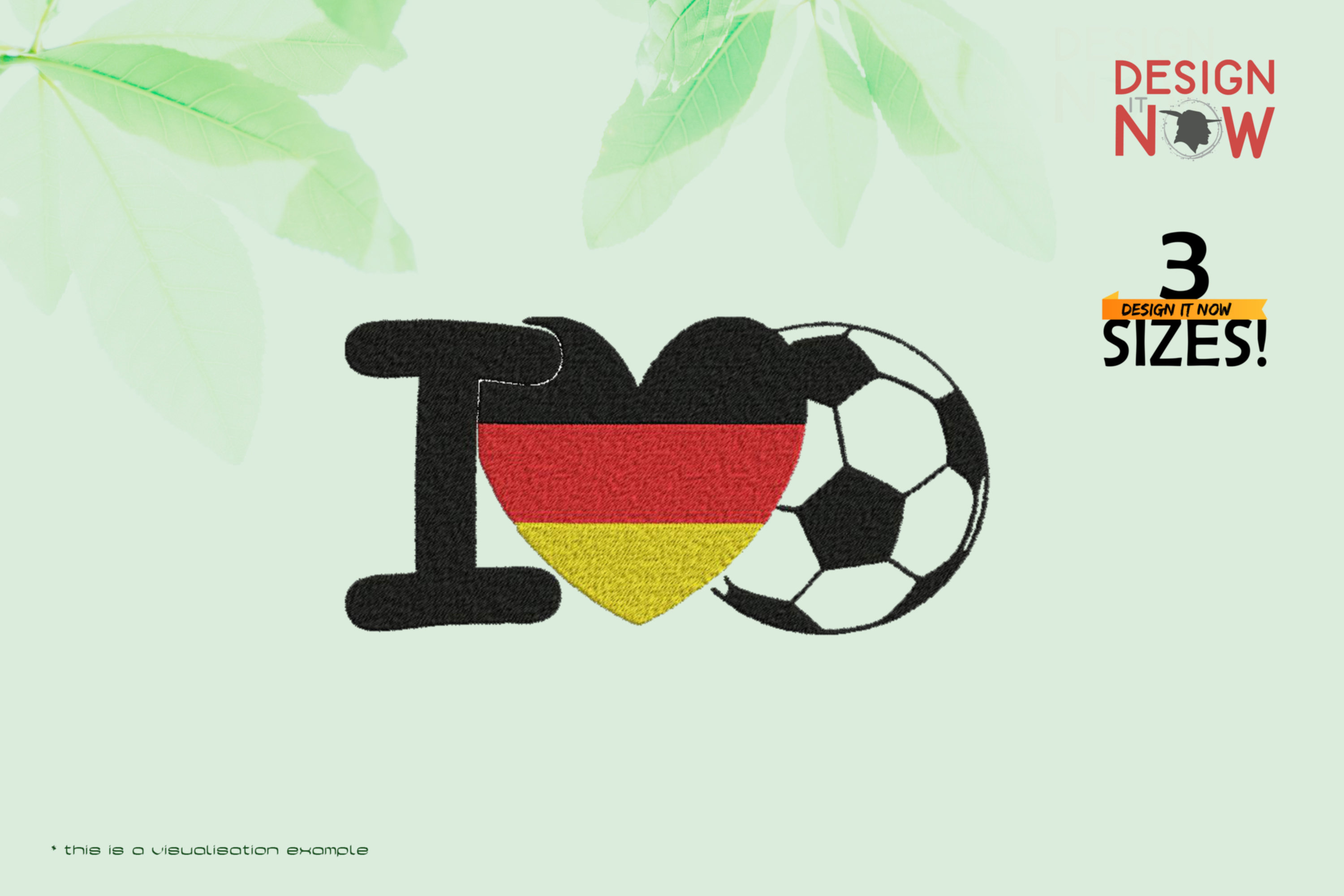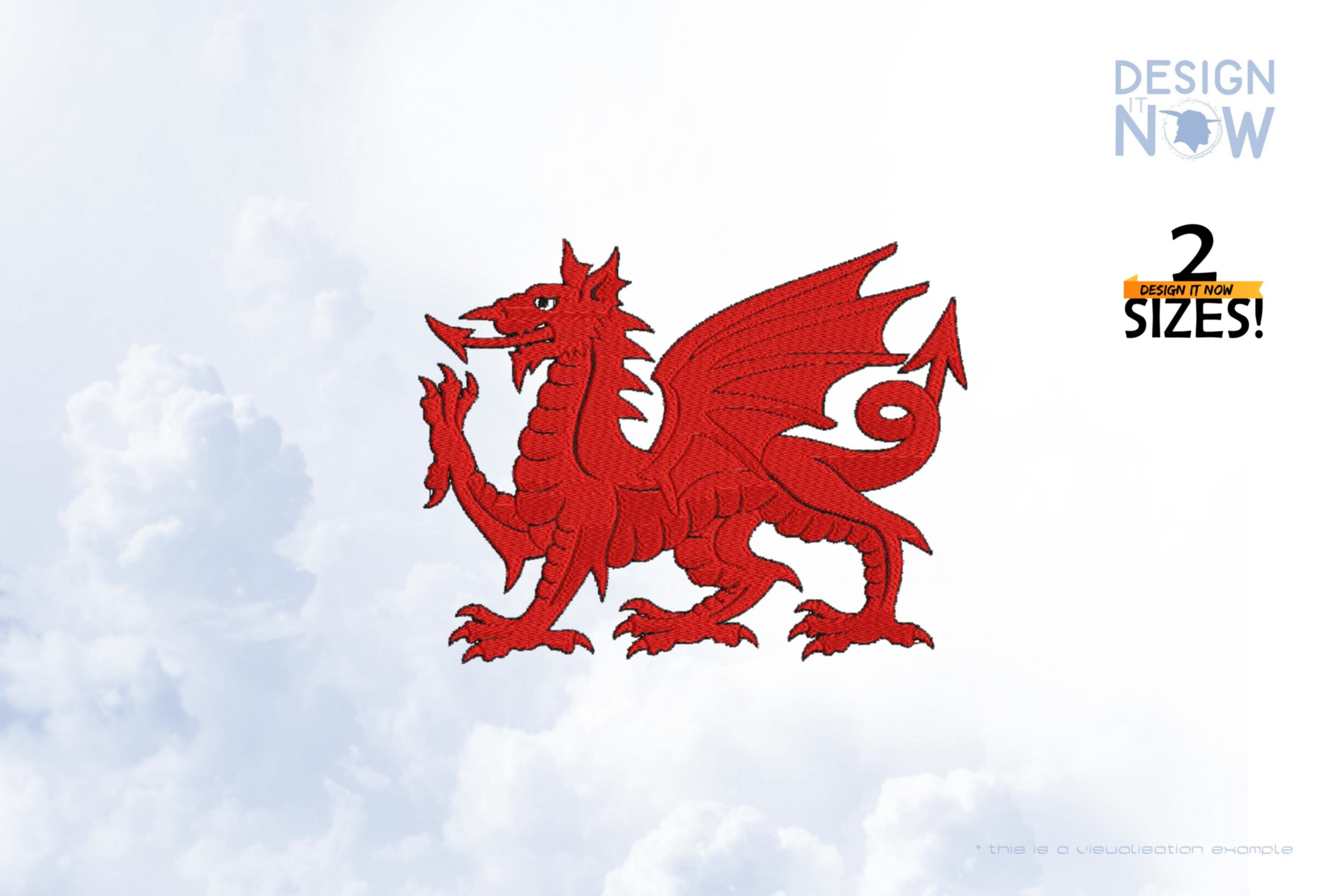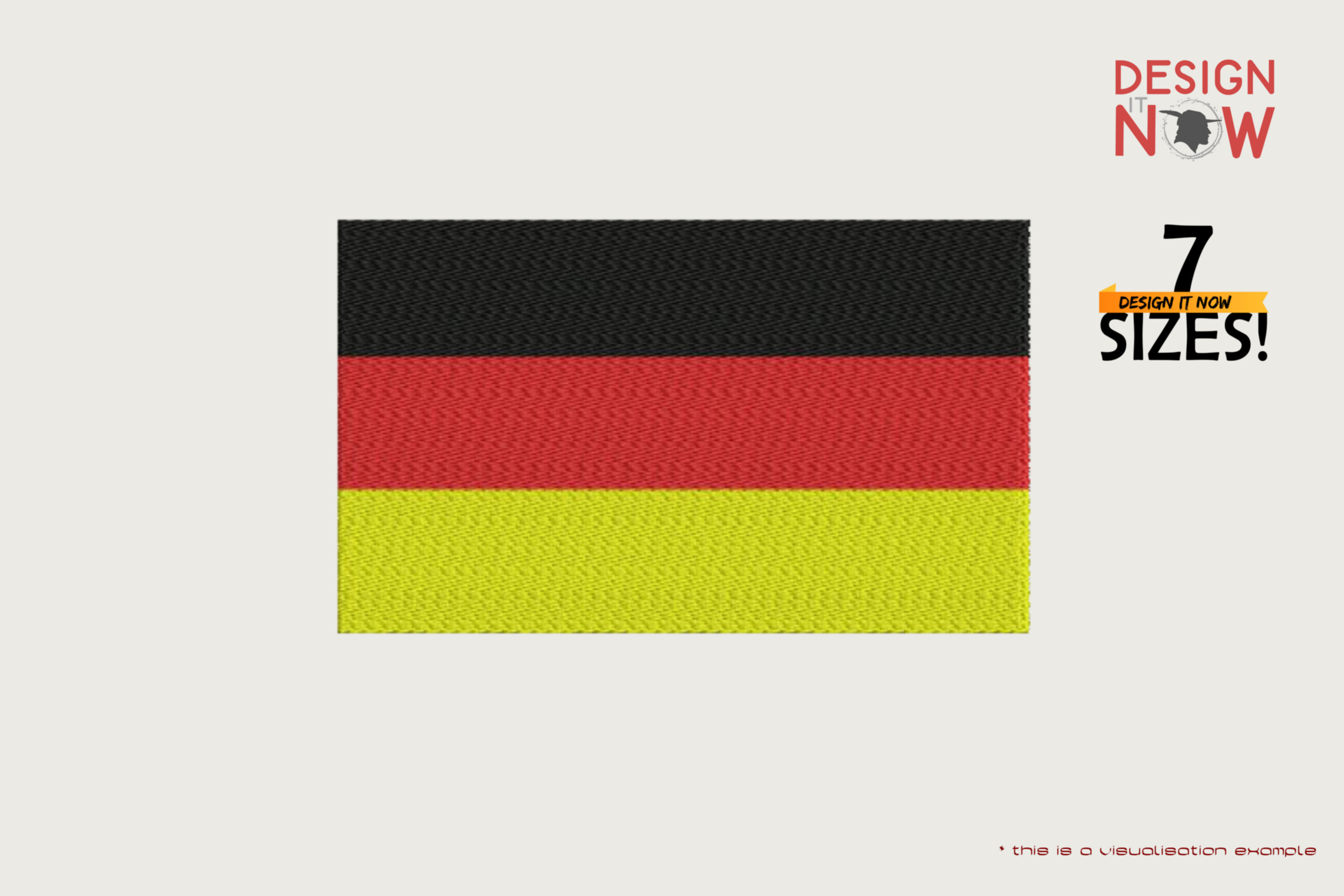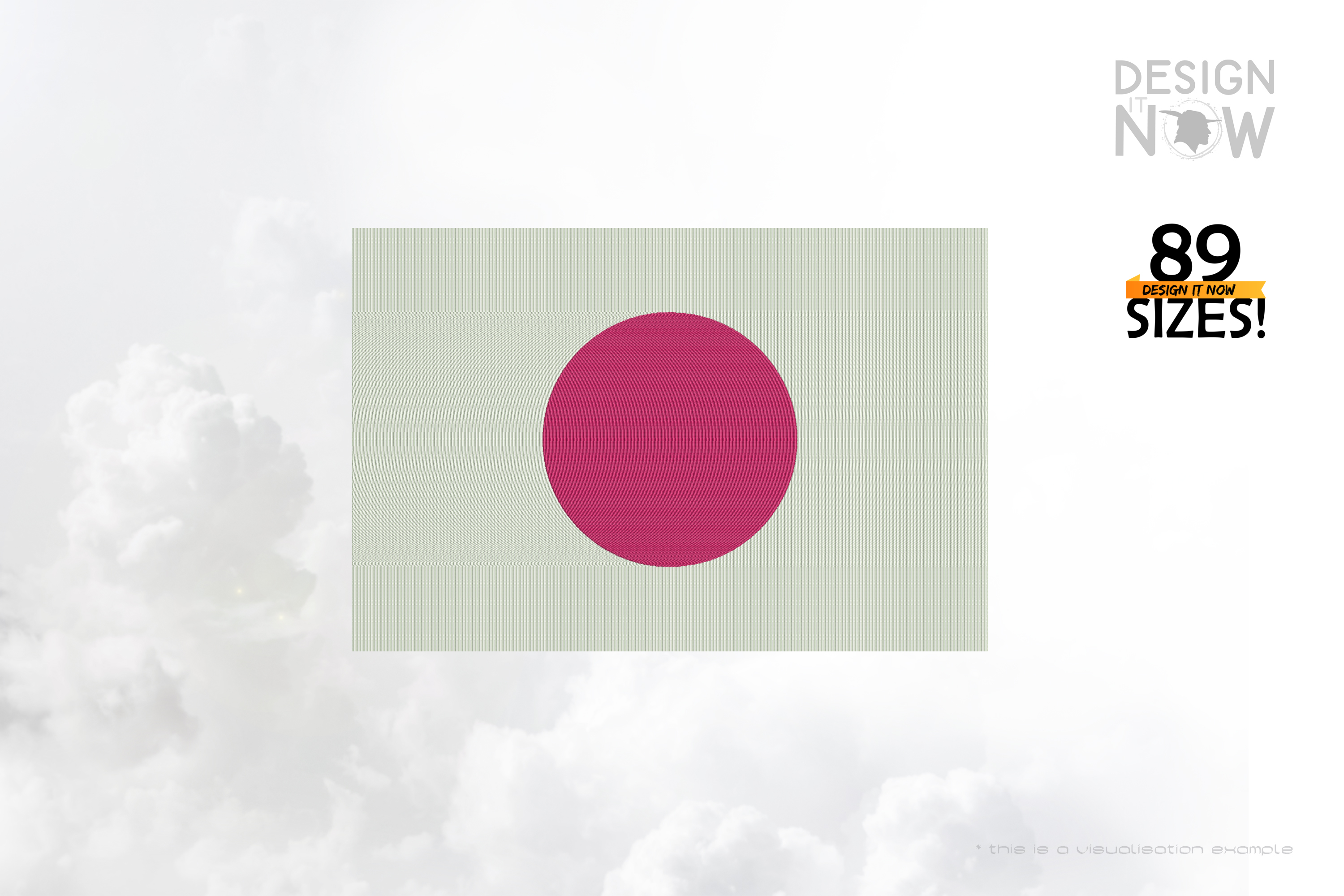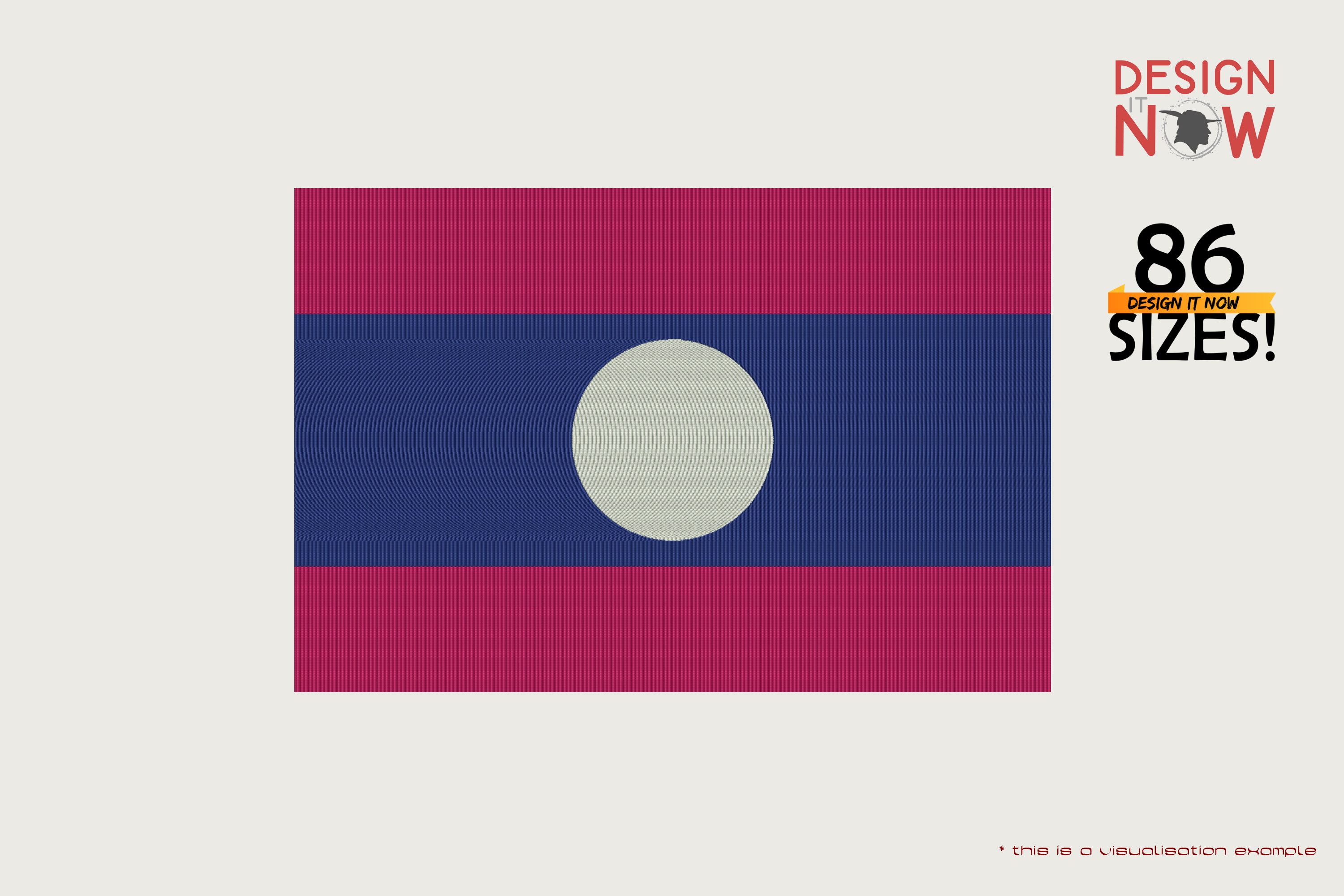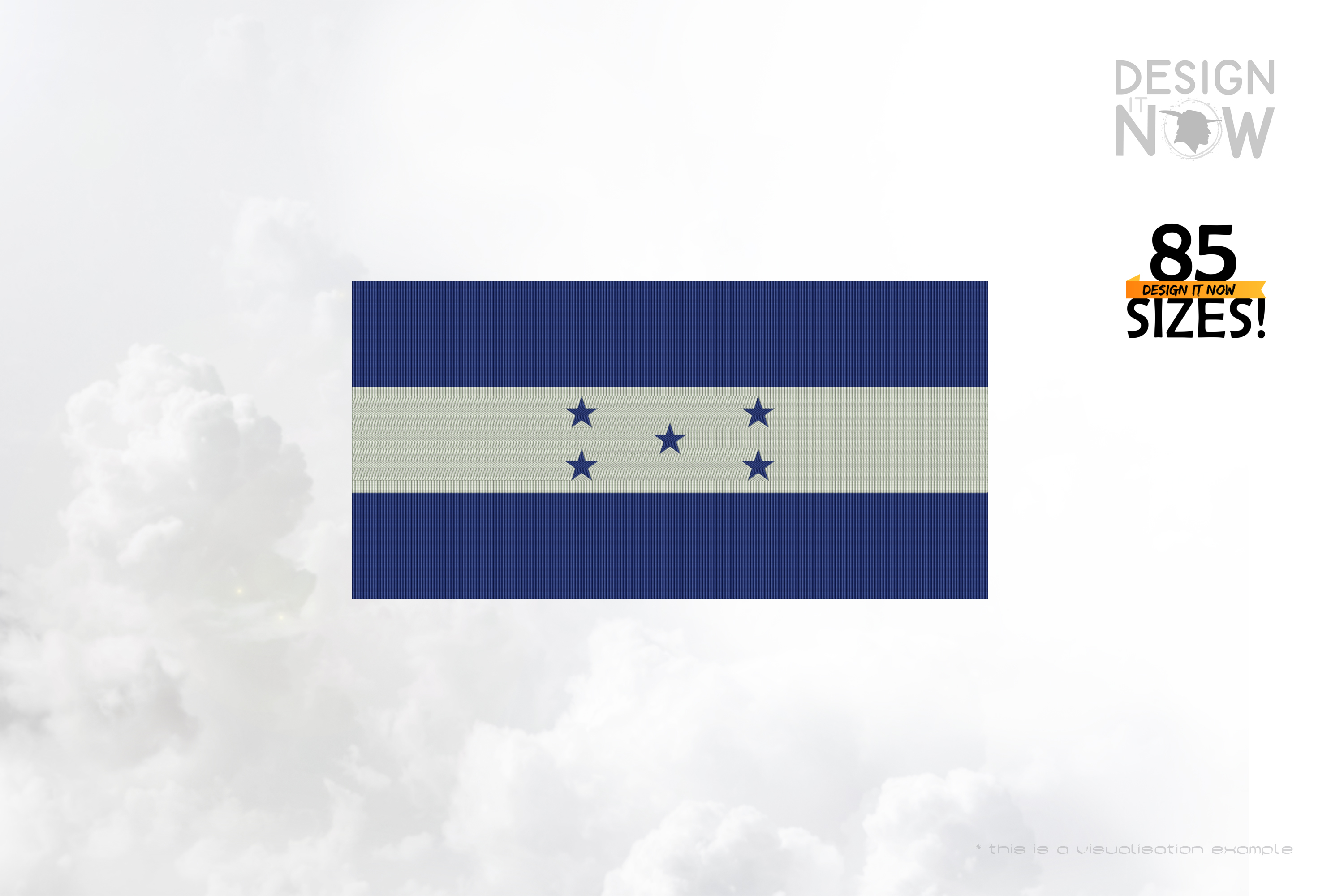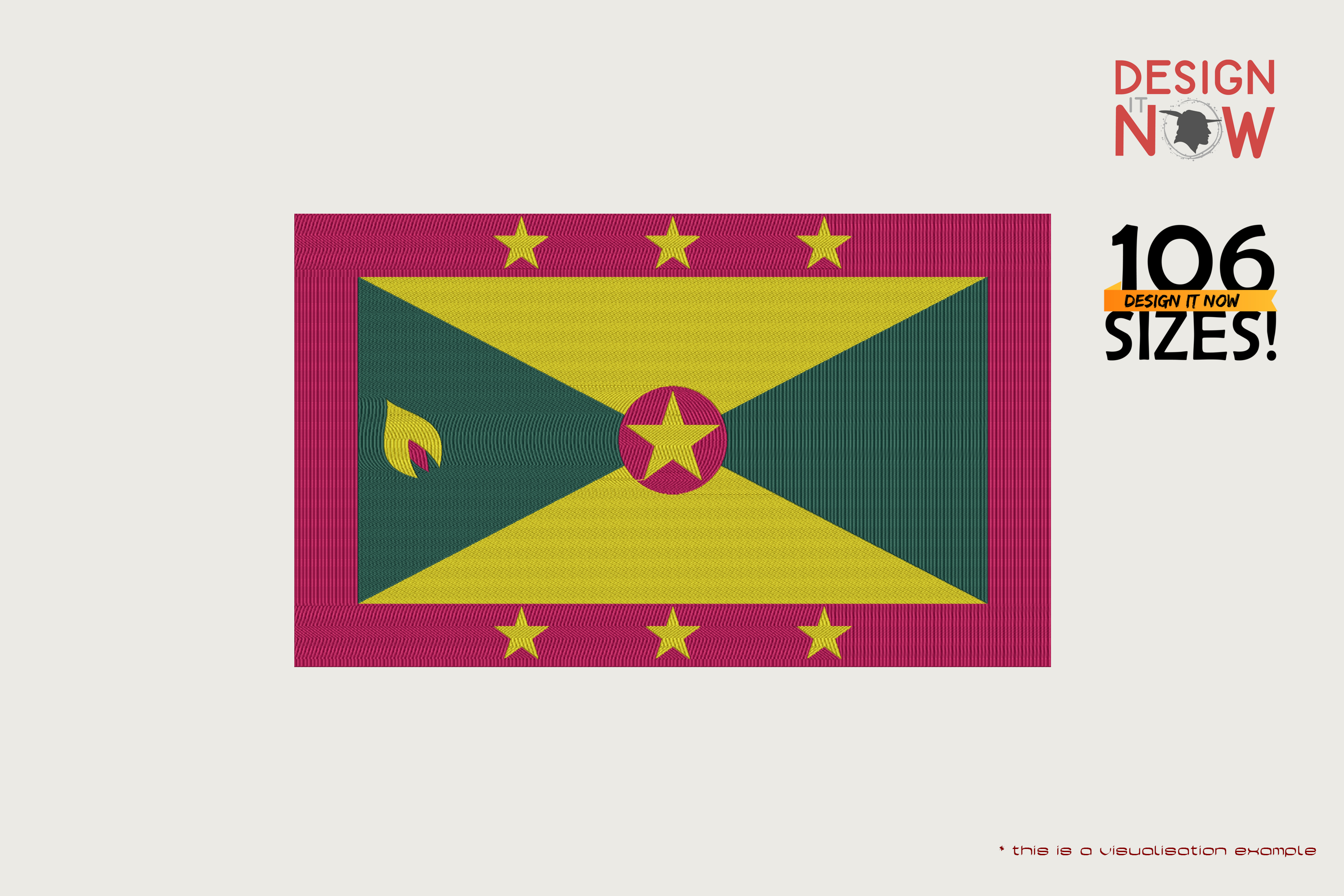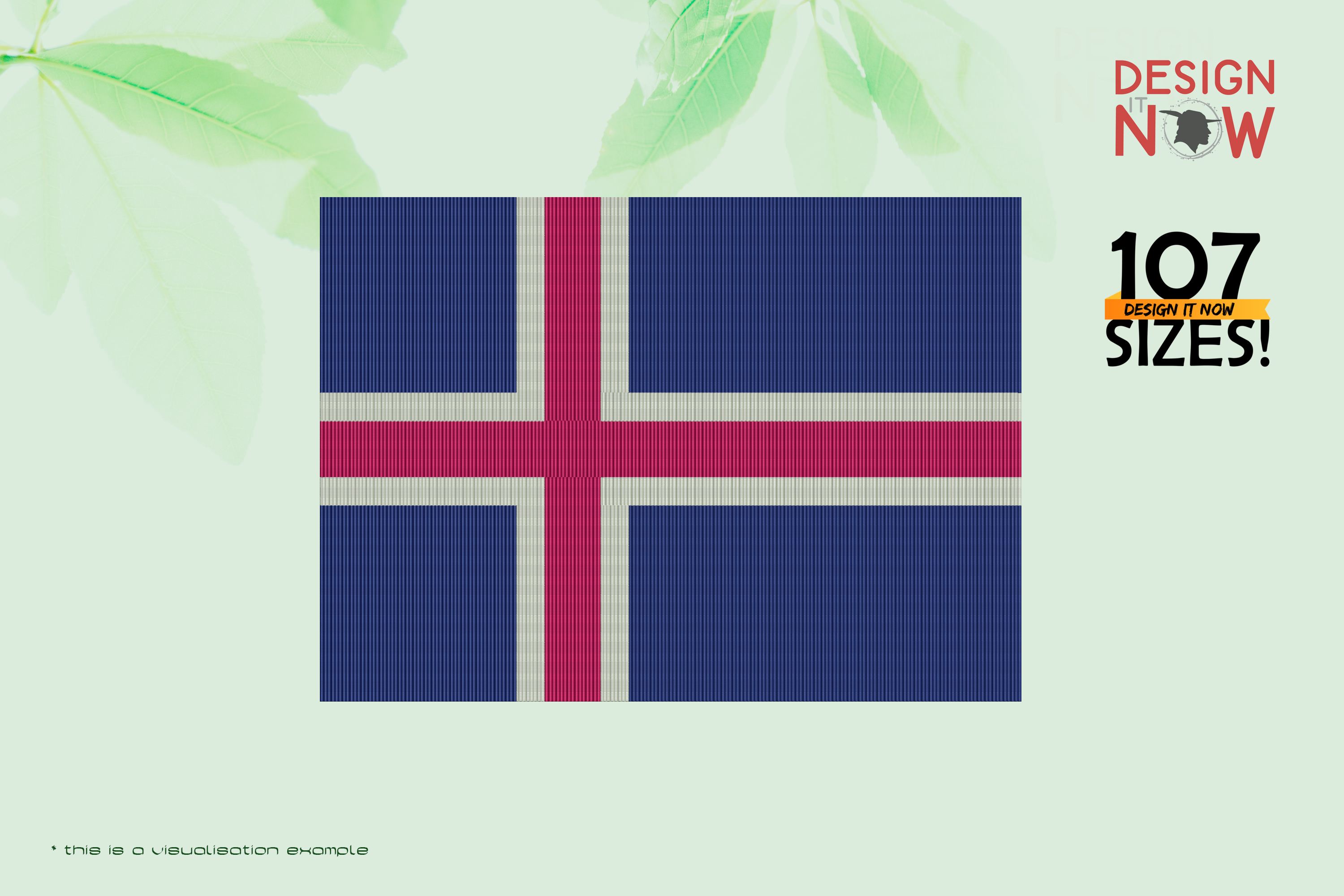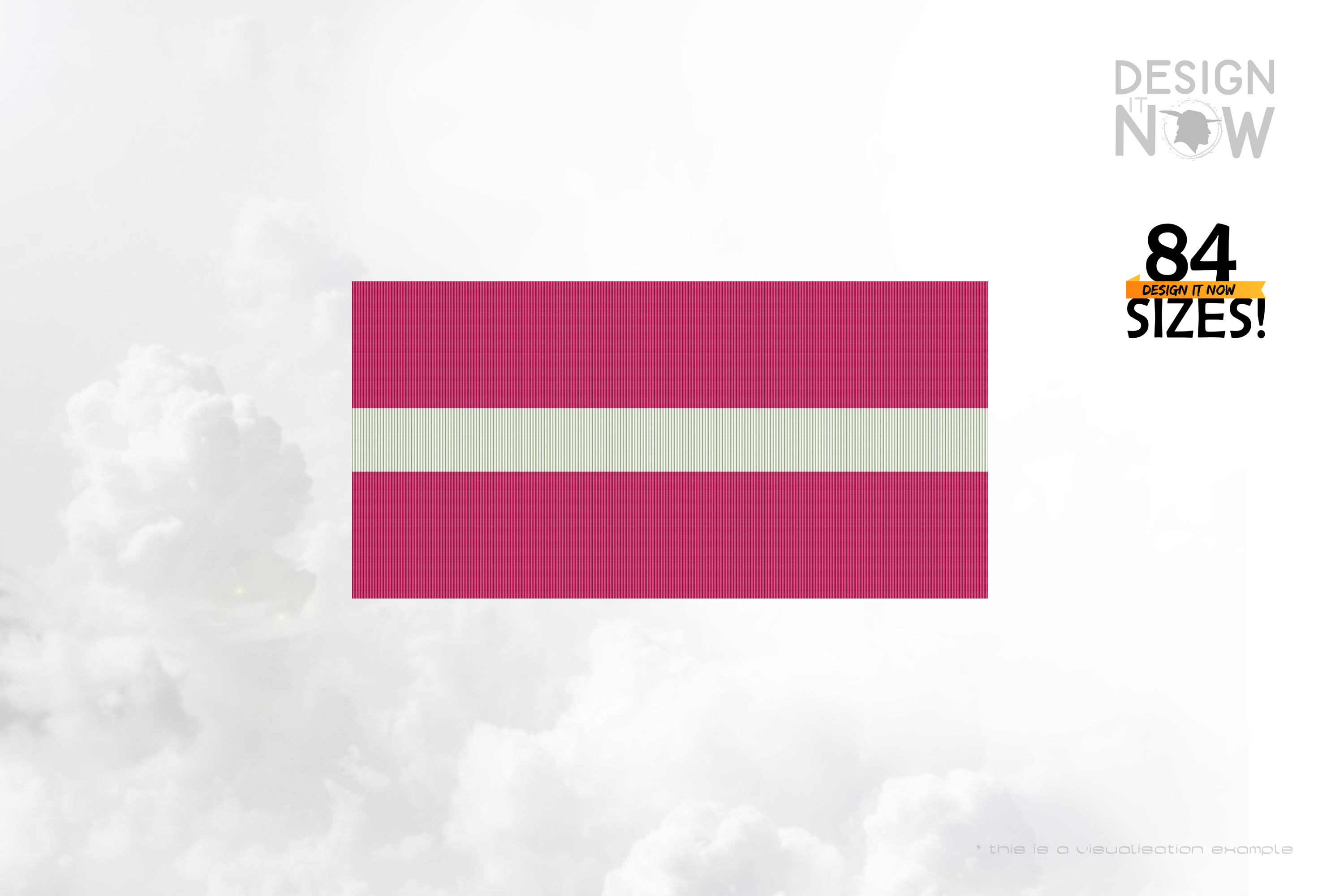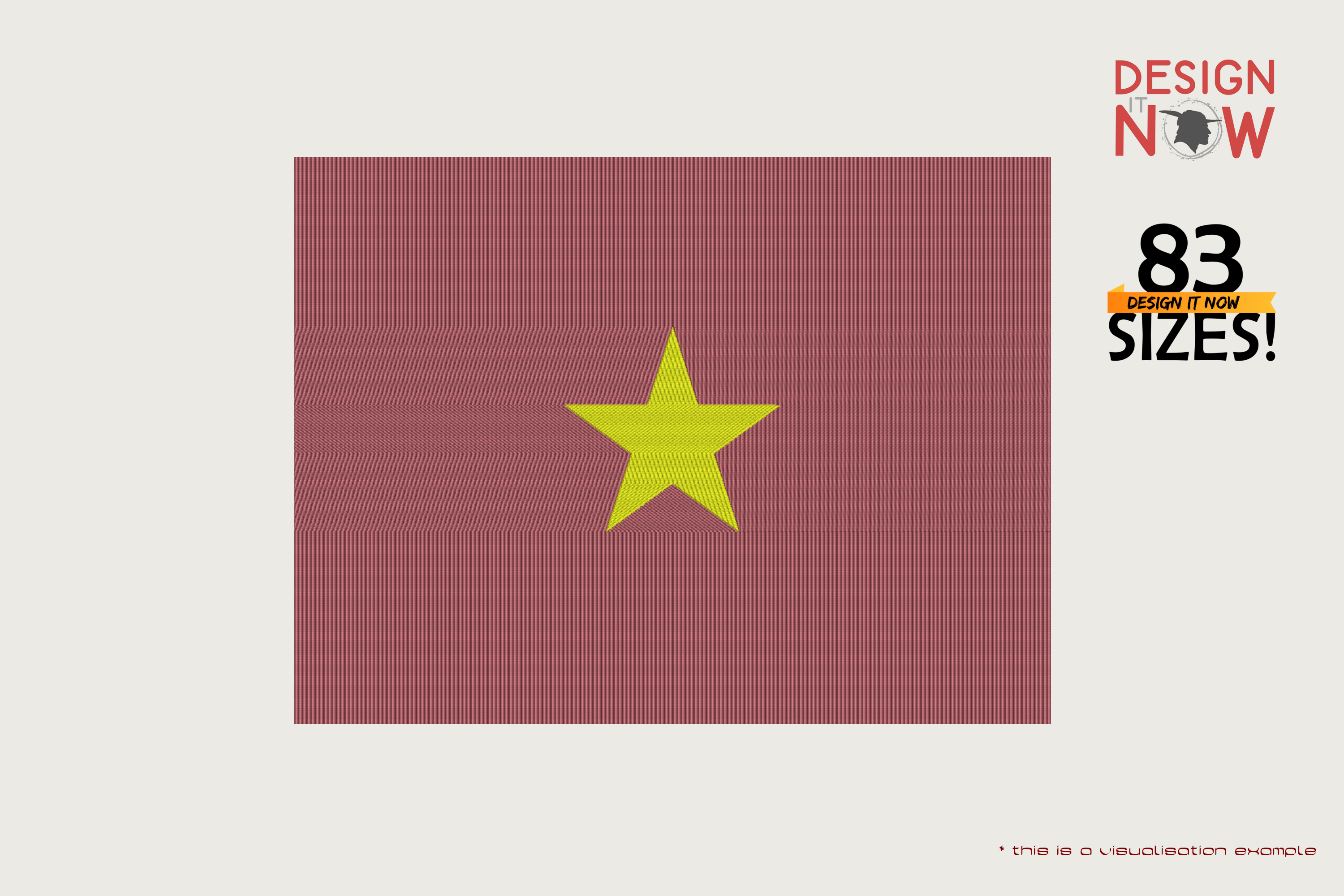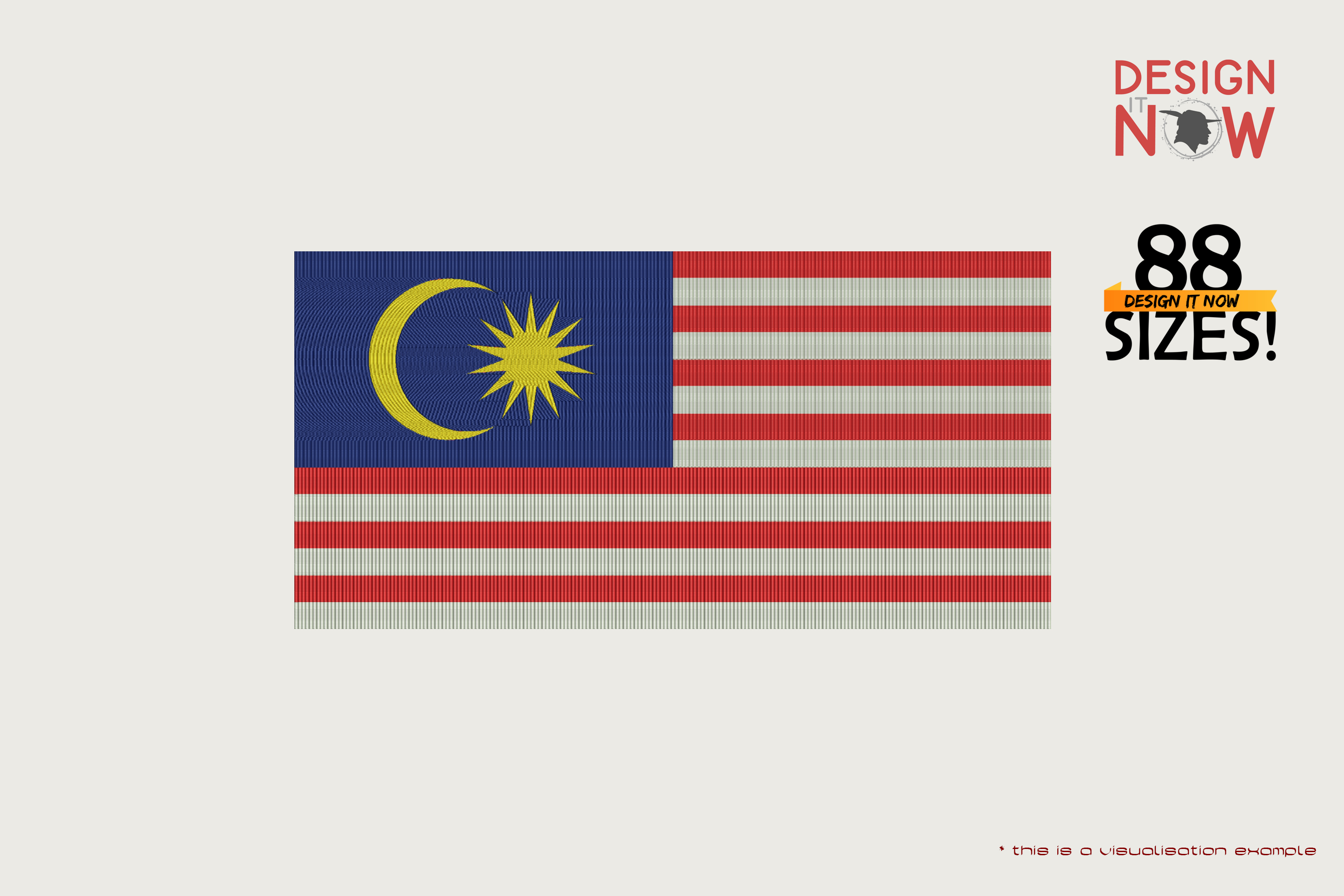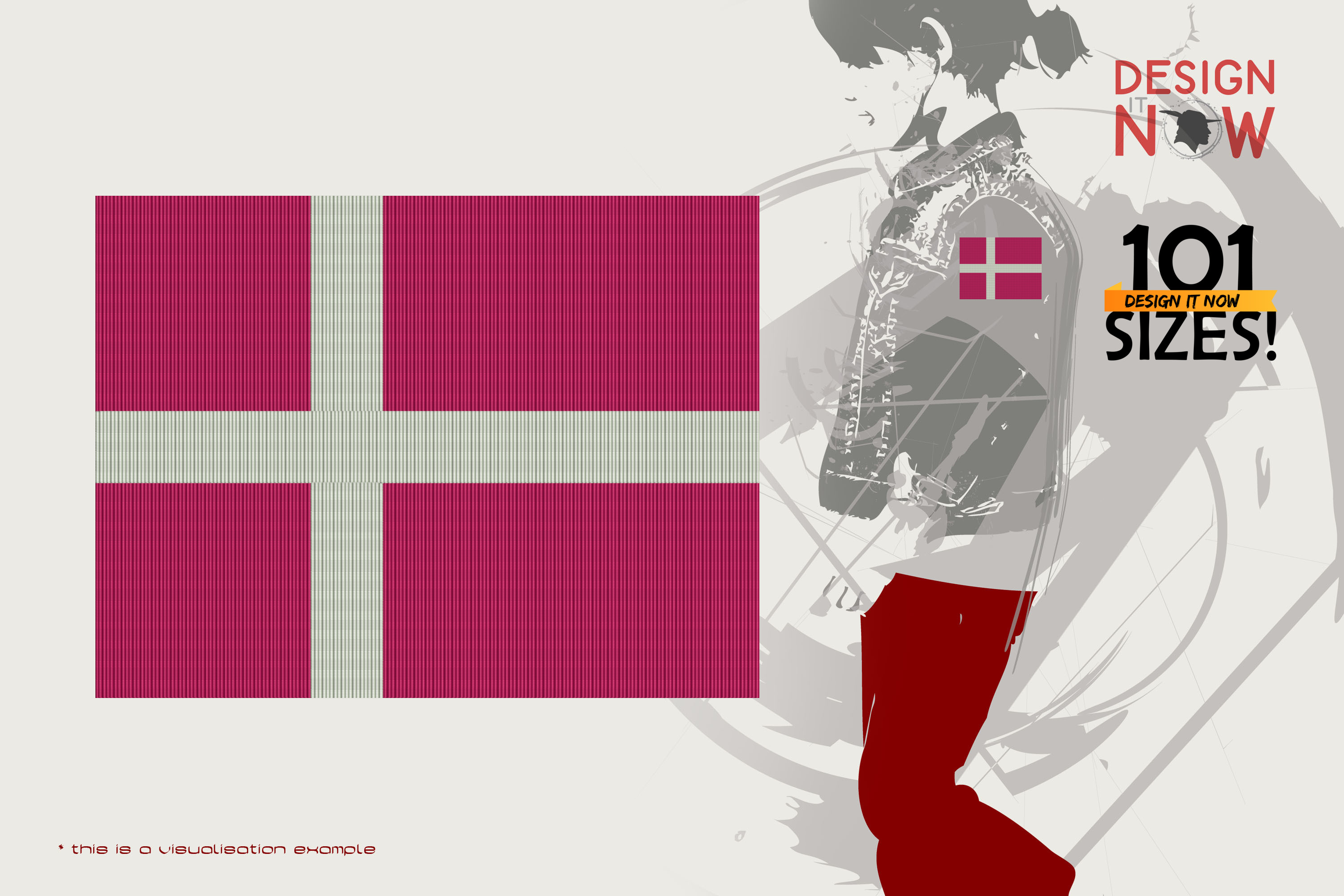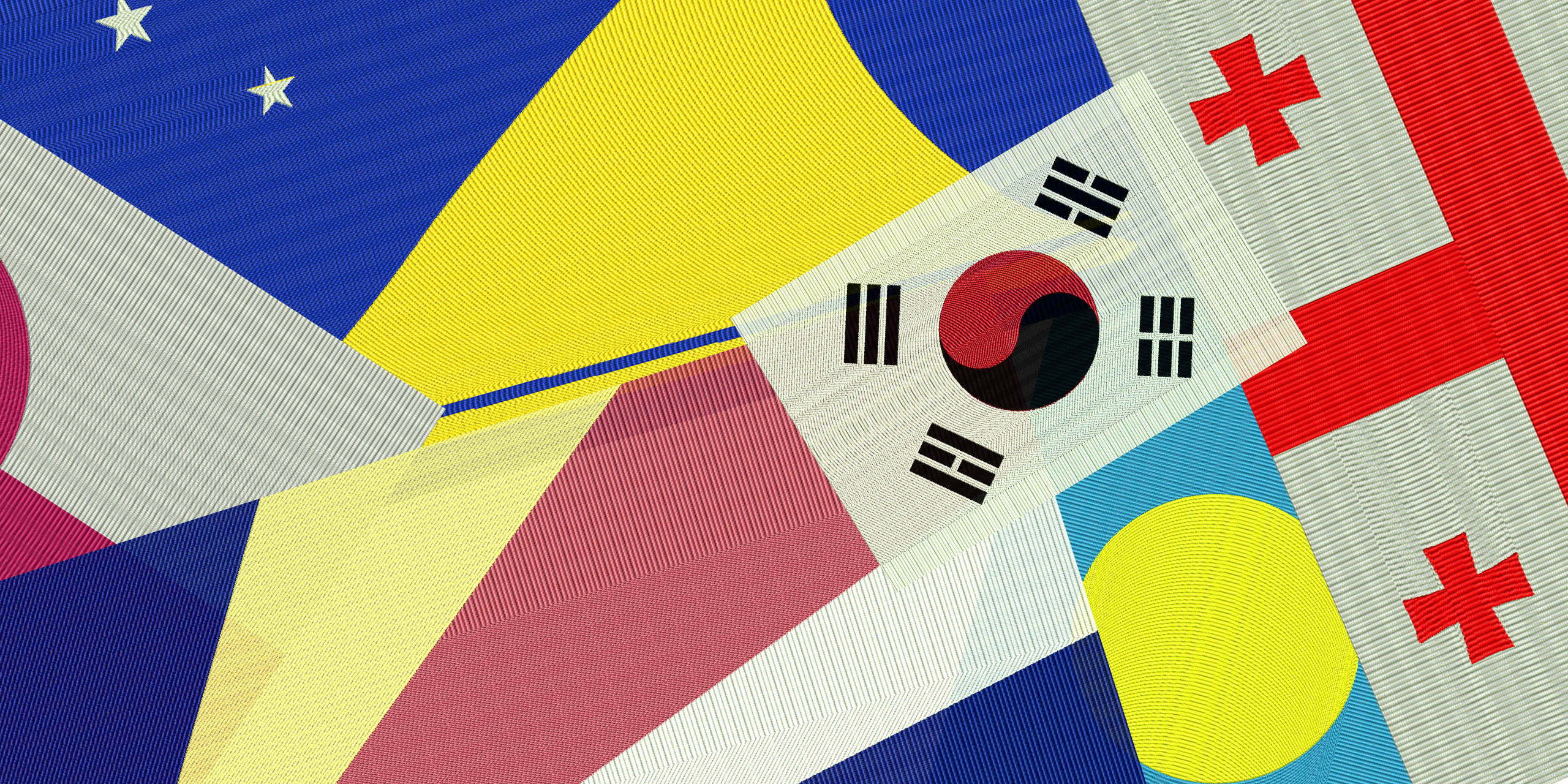
Flags
A flag is an abstract two-dimensional arrangement of colors, areas and characters, usually rectangular in shape. It is usually made of cloth, but other materials such as paper, plastic or metal are also used. Their painted image often serves the same purposes as the actual flag.
Flags are used for visual transmission of information, originally over a greater distance, such as from ship to ship. Often this is to mark the affiliation or representation of communities and entities. The science of flags and flagging is called vexillology (flag lore).
The word flag has a Norse origin, probably arising in England in the 17th century, from the Old Norse word flogra, meaning to flutter. Around 1600, in the course of the creation of national flags, it finally found its way in a modified form into Dutch and Low German or Nine Dutch usage and thus became vlag (Dutch: "ship's flag"). Later it became flag in German usage. Another variant of origin can be found in the old Saxon or Germanic word Flaken or Ffleogan, which means "blowing in the wind".
In the narrower (legal) sense, a flag is a piece of cloth that can be disposed of and replaced when worn. Flags are replaceable; they are manufactured in various sizes and in large numbers. A flag is often hoisted on a pole or flagpole with a flag line, making it easily replaceable. The word flag also serves as a generic term for flags, banners, standards and pennants.[
%
Love Soccer German Flag
Soccer is a ball sport in which two teams compete against each other with the goal of scoring more goals than their opponents to win the game. The game is usually played for two 45-minute periods, plus overtime and, if necessary, extra time and/or penalties. A team usually consists of eleven players, one of whom is the goalkeeper. The ball may be played with the whole body except the arms and hands; it is mainly kicked with the foot. Only the goalkeeper (inside his own penalty area) - or the field players when taking a throw-in - may touch the ball with their hands.The success of soccer is based, firstly, on its simplicity. The cost of resources and equipment is relatively low (see, for example, street soccer), which has made it very popular in many developing countries, and it is easy for newcomers and spectators to understand or even take for granted. Secondly, the number of goals is relatively low, which increases the value of a goal and makes the games more exciting, since superior or better-placed teams do not win as often or can be determined as winners early on as in other ball sports.However, these special features have been counteracted in recent times by more complicated regulations (including changes to the offside rule) and ever greater (technical) expense in top-level soccer (including video evidence), which are intended to lead to "fairer" soccer.Soccer originated in Great Britain in the second half of the 19th century and spread to continental Europe and other continents from the 1880s and 1890s. It is considered the world's most popular team sport. Unlike other sports (such as handball), top clubs in soccer usually developed only in large cities, which can boast the very elaborate infrastructure with recently increasing demands.Product Number: N03807Product Name: SoccerThis design comes with the following sizes:Size: 5.52"(w) X 2.73"(h) (140.2 X 69.4mm) Size: 6.70"(w) X 3.32"(h) (170.2 X 84.3mm) Size: 7.85"(w) X 3.88"(h) (199.3 X 98.6mm)The following formats are included in the file you will receive: .DST .EXP .JEF .PES .VP3 .XXX .VIP .HUSYou MUST have an embroidery machine and the software needed to transfer it from your computer to the machine to use this file. This listing is for the machine file only - not a finished item.Love Heart Soccer German Flag Machine Embroidery Design, Team Sport Embroidery Pattern, Sport Designs, Football Embroidery Art, Ball Sport, Field Players, DIY Project Idea, Unique Digital Supplies For Embroidery Machines
US$1.10* US$4.40* (75% saved)
%
Dragon Symbol
A dragon (Latin draco, Ancient Greek drakōn, "snake"; actually: "the staring one" or "sharp-eyed animal) among the Greeks and Romans the name for any non-poisonous larger snake species) is a serpent-like hybrid creature of mythology, in which characteristics of reptiles, birds and predators are combined in different variations. It is scaled in most myths, has two hind legs, two front legs, two wings (thus six limbs), and a long tail. It is said to have the ability to breathe fire. The dragon is known as a mythical creature from myths, legends and fairy tales of many cultures; until modern times, it was considered to be a real existing animal. In oriental and western creation myths, the dragon is a symbol of chaos, a monster hostile to God and man that holds back the fruit-bearing waters and threatens to devour the sun and moon. It must be overcome and killed by a hero or deity in battle so that the world can come into being or continue to exist (dragon slayer). In contrast, the East Asian dragon is a conflicting creature with predominantly positive qualities: rain and good luck bringer and symbol of fertility and imperial power.Product Number: N03615Product Name: DragonThis design comes with the following sizes:Size: 5.19"(w) X 6.69"(h) (131.9 X 170.0mm)Size: 6.10"(w) X 7.87"(h) (154.9 X 199.9mm)The following formats are included in the file you will receive: .DST .EXP .JEF .PES .VP3 .XXX .VIP .HUSYou MUST have an embroidery machine and the software needed to transfer it from your computer to the machine to use this file. This listing is for the machine file only - not a finished item.Dragon Machine Embroidery Design, Draco Embroidery Pattern, Snake Embroidery Art, Creature Of Mythology, Myths And Legends Animals DIY Project Ideas, Beautiful Digital Supplies For Embroidery Machines
US$1.10* US$4.40* (75% saved)
%
Germany National Flag
A flag is a symbol, often in the form of a cloth or flag, that represents the identity, affiliation or nationality of a country, organisation or group. Flags can contain different colours, patterns, symbols or emblems that have specific meanings. Product Number: N03161Product Name: DEUThis design comes with the following sizes:Size: 1.97"(w) X 1.17"(h) (50.0 X 29.8mm) Size: 2.76"(w) X 1.65"(h) (70.1 X 42.0mm) Size: 2.83"(w) X 4.73"(h) (71.8 X 120.1mm) Size: 3.34"(w) X 2.01"(h) (84.9 X 51.0mm) Size: 3.30"(w) X 5.51"(h) (83.8 X 140.0mm) Size: 3.94"(w) X 2.36"(h) (100.0 X 60.0mm) Size: 4.02"(w) X 6.70"(h) (102.0 X 170.1mm)The following formats are included in the file you will receive: .DST .EXP .JEF .PES .VP3 .XXX .HUS .VIPYou MUST have an embroidery machine and the software needed to transfer it from your computer to the machine to use this file. This listing is for the machine file only - not a finished item.Germany National Flag Machine Embroidery Design, DEU Flag Embroidery Pattern, Banner Designs, International Flags Embroidery Art, Flags Of The World, Vexillology, DIY Project Idea, Unique Digital Supplies For Embroidery Machines
US$1.10* US$4.40* (75% saved)
%
Japan-Nihon-Nippon
Japan (Japanese: pronounced as Nihon or Nippon) is a 6852-island East Asian state in the Pacific Ocean, indirectly bordering Russia to the north and northwest, North and South Korea to the west, and Taiwan and China to the southwest, and is the fourth-largest island nation in the world by area. The de facto capital and largest urban settlement is Tokyo, which was abolished as a political entity during World War II; de jure, there is a "capital area" consisting of eight prefectures including Tokyo. The formation of the Japanese state system began in the 5th century under the cultural influence of the Chinese Empire. Japan was in contact with the West since the 16th century and rose to become a great power since the 19th century, acquiring colonies such as Korea and Taiwan, participating in both world wars, and briefly dominating large parts of Southeast and East Asia. Until 1947, the Empire of Japan was a constitutional monarchy based on the monarchical principle, partly on the Prussian model, with the Japanese emperor as head of state. In the Japanese state formed under Douglas MacArthur's occupation government since 1947, the sovereign is the people, and the highest organ of state power is the parliament, both chambers of which have since been directly elected by the people. The emperorship was not abolished, but the emperor, as the "symbol of the state," was reduced to ceremonial duties without independent authority in matters of state. Except for Japan, there is no state in the world whose head of state is an emperor.Product Number: N08361Product Name: jpThis design comes with the following sizes:Size: 2.98"(w) X 1.98"(h) (75.8mm X 50.4mm)Size: 3.06"(w) X 2.04"(h) (77.8mm X 51.8mm)Size: 3.10"(w) X 2.06"(h) (78.8mm X 52.4mm)Size: 3.18"(w) X 2.12"(h) (80.8mm X 53.8mm)Size: 3.22"(w) X 2.14"(h) (81.8mm X 54.4mm)Size: 3.30"(w) X 2.20"(h) (83.8mm X 55.8mm)Size: 3.34"(w) X 2.22"(h) (84.8mm X 56.4mm)Size: 3.42"(w) X 2.28"(h) (86.8mm X 57.8mm)Size: 3.46"(w) X 2.30"(h) (87.8mm X 58.4mm)Size: 3.54"(w) X 2.35"(h) (89.8mm X 59.8mm)Size: 3.57"(w) X 2.38"(h) (90.8mm X 60.4mm)Size: 3.65"(w) X 2.43"(h) (92.8mm X 61.8mm)Size: 3.69"(w) X 2.46"(h) (93.8mm X 62.4mm)Size: 3.77"(w) X 2.51"(h) (95.8mm X 63.8mm)Size: 3.81"(w) X 2.54"(h) (96.8mm X 64.4mm)Size: 3.89"(w) X 2.59"(h) (98.8mm X 65.8mm)Size: 3.93"(w) X 2.61"(h) (99.8mm X 66.4mm)Size: 3.97"(w) X 2.65"(h) (100.8mm X 67.2mm)Size: 4.01"(w) X 2.67"(h) (101.8mm X 67.8mm)Size: 4.05"(w) X 2.69"(h) (102.8mm X 68.4mm)Size: 4.13"(w) X 2.75"(h) (104.8mm X 69.8mm)Size: 4.17"(w) X 2.77"(h) (105.8mm X 70.4mm)Size: 4.20"(w) X 2.80"(h) (106.8mm X 71.2mm)Size: 4.24"(w) X 2.83"(h) (107.8mm X 71.8mm)Size: 4.28"(w) X 2.85"(h) (108.8mm X 72.4mm)Size: 4.32"(w) X 2.88"(h) (109.8mm X 73.2mm)Size: 4.48"(w) X 2.98"(h) (113.8mm X 75.8mm)Size: 4.60"(w) X 3.06"(h) (116.8mm X 77.8mm)Size: 4.64"(w) X 3.09"(h) (117.8mm X 78.4mm)Size: 4.68"(w) X 3.12"(h) (118.8mm X 79.2mm)Size: 4.72"(w) X 3.14"(h) (119.8mm X 79.8mm)Size: 4.83"(w) X 3.22"(h) (122.8mm X 81.8mm)Size: 4.87"(w) X 3.24"(h) (123.8mm X 82.4mm)Size: 4.99"(w) X 3.32"(h) (126.8mm X 84.4mm)Size: 5.11"(w) X 3.40"(h) (129.8mm X 86.4mm)Size: 5.15"(w) X 3.43"(h) (130.8mm X 87.2mm)Size: 5.19"(w) X 3.46"(h) (131.8mm X 87.8mm)Size: 5.43"(w) X 3.61"(h) (137.8mm X 91.8mm)Size: 5.46"(w) X 3.64"(h) (138.8mm X 92.4mm)Size: 5.50"(w) X 3.67"(h) (139.8mm X 93.2mm)Size: 5.54"(w) X 3.69"(h) (140.8mm X 93.8mm)Size: 5.58"(w) X 3.72"(h) (141.8mm X 94.4mm)Size: 5.66"(w) X 3.77"(h) (143.8mm X 95.8mm)Size: 5.70"(w) X 3.80"(h) (144.8mm X 96.4mm)Size: 5.82"(w) X 3.87"(h) (147.8mm X 98.4mm)Size: 5.86"(w) X 3.91"(h) (148.8mm X 99.2mm)Size: 5.94"(w) X 3.95"(h) (150.8mm X 100.4mm)Size: 6.02"(w) X 4.01"(h) (152.8mm X 101.8mm)Size: 6.06"(w) X 4.03"(h) (153.8mm X 102.4mm)Size: 6.09"(w) X 4.06"(h) (154.8mm X 103.2mm)Size: 6.29"(w) X 4.19"(h) (159.8mm X 106.4mm)Size: 6.33"(w) X 4.22"(h) (160.8mm X 107.2mm)Size: 6.37"(w) X 4.24"(h) (161.8mm X 107.8mm)Size: 6.49"(w) X 4.32"(h) (164.8mm X 109.8mm)Size: 6.65"(w) X 4.43"(h) (168.8mm X 112.4mm)Size: 6.80"(w) X 4.54"(h) (172.8mm X 115.2mm)Size: 6.84"(w) X 4.56"(h) (173.8mm X 115.8mm)Size: 6.92"(w) X 4.61"(h) (175.8mm X 117.2mm)Size: 7.00"(w) X 4.66"(h) (177.8mm X 118.4mm)Size: 7.08"(w) X 4.72"(h) (179.8mm X 119.8mm)Size: 7.12"(w) X 4.74"(h) (180.8mm X 120.4mm)Size: 7.24"(w) X 4.82"(h) (183.8mm X 122.4mm)Size: 7.35"(w) X 4.90"(h) (186.8mm X 124.4mm)Size: 7.43"(w) X 4.95"(h) (188.8mm X 125.8mm)Size: 7.55"(w) X 5.03"(h) (191.8mm X 127.8mm)Size: 7.75"(w) X 5.17"(h) (196.8mm X 131.2mm)Size: 7.87"(w) X 5.24"(h) (199.8mm X 133.2mm)Size: 7.91"(w) X 5.27"(h) (200.8mm X 133.8mm)Size: 7.94"(w) X 5.29"(h) (201.8mm X 134.4mm)Size: 8.06"(w) X 5.37"(h) (204.8mm X 136.4mm)Size: 8.26"(w) X 5.50"(h) (209.8mm X 139.8mm)Size: 8.30"(w) X 5.53"(h) (210.8mm X 140.4mm)Size: 8.34"(w) X 5.56"(h) (211.8mm X 141.2mm)Size: 8.61"(w) X 5.74"(h) (218.8mm X 145.8mm)Size: 8.85"(w) X 5.90"(h) (224.8mm X 149.8mm)Size: 8.89"(w) X 5.92"(h) (225.8mm X 150.4mm)Size: 9.05"(w) X 6.03"(h) (229.8mm X 153.2mm)Size: 9.13"(w) X 6.08"(h) (231.8mm X 154.4mm)Size: 9.36"(w) X 6.24"(h) (237.8mm X 158.4mm)Size: 9.76"(w) X 6.50"(h) (247.8mm X 165.2mm)Size: 9.83"(w) X 6.55"(h) (249.8mm X 166.4mm)Size: 10.15"(w) X 6.76"(h) (257.8mm X 171.8mm)Size: 10.23"(w) X 6.82"(h) (259.8mm X 173.2mm)Size: 10.62"(w) X 7.08"(h) (269.8mm X 179.8mm)Size: 10.82"(w) X 7.21"(h) (274.8mm X 183.2mm)Size: 11.80"(w) X 7.87"(h) (299.8mm X 199.8mm)Size: 12.31"(w) X 8.20"(h) (312.8mm X 208.4mm)Size: 14.17"(w) X 9.44"(h) (359.8mm X 239.8mm)Size: 14.76"(w) X 9.83"(h) (374.8mm X 249.8mm)The following formats are included in the file you will receive: .DST .EXP .JEF .PES .VP3 .XXX .PEC .U01You MUST have an embroidery machine and the software needed to transfer it from your computer to the machine to use this file. This listing is for the machine file only - not a finished item.Japan National Flag Machine Embroidery Design, Nihon Flag Embroidery Pattern, Nippon Flag, Banner Designs, International Flags Embroidery Art, Flags Of The World, Vexillology, DIY Project Idea, Unique Digital Supplies For Embroidery Machines
US$1.10* US$4.40* (75% saved)
%
Laos-The Lao People's Democratic Republic
Laos ( Laotic transcribed: Sathalanalat Paxathipatai Paxaxon Lao, English: The Lao People's Democratic Republic) is the only landlocked country in Southeast Asia. The state of Laos borders China, Vietnam, Cambodia, Thailand and Myanmar and has about 7 million inhabitants on an area of 236,800 km²; capital and largest city is Vientiane. After the communist takeover, attempts were initially made to introduce a planned economic regime starting in 1975. As early as 1986, market-economy reforms were introduced as part of the New Economic Mechanism (NEM). Price controls and subsidies were gradually abolished, the exchange rate of the kip was adjusted to the market rate, a Western-style banking system was introduced and private economic activity was encouraged. Institutions regulating the market economy, such as the legal and administrative system, began to be built. The economy then grew by more than 6 % annually in real terms in the 1990s. The government's goal is to overcome the status of a Least Developed Country by 2020.Product Number: N08391Product Name: laThis design comes with the following sizes:Size: 2.98"(w) X 1.98"(h) (75.8mm X 50.4mm)Size: 3.06"(w) X 2.04"(h) (77.8mm X 51.8mm)Size: 3.10"(w) X 2.06"(h) (78.8mm X 52.4mm)Size: 3.18"(w) X 2.12"(h) (80.8mm X 53.8mm)Size: 3.22"(w) X 2.14"(h) (81.8mm X 54.4mm)Size: 3.30"(w) X 2.20"(h) (83.8mm X 55.8mm)Size: 3.34"(w) X 2.22"(h) (84.8mm X 56.4mm)Size: 3.42"(w) X 2.28"(h) (86.8mm X 57.8mm)Size: 3.46"(w) X 2.30"(h) (87.8mm X 58.4mm)Size: 3.54"(w) X 2.35"(h) (89.8mm X 59.8mm)Size: 3.57"(w) X 2.38"(h) (90.8mm X 60.4mm)Size: 3.65"(w) X 2.43"(h) (92.8mm X 61.8mm)Size: 3.69"(w) X 2.46"(h) (93.8mm X 62.4mm)Size: 3.77"(w) X 2.51"(h) (95.8mm X 63.8mm)Size: 3.81"(w) X 2.54"(h) (96.8mm X 64.4mm)Size: 3.89"(w) X 2.59"(h) (98.8mm X 65.8mm)Size: 3.93"(w) X 2.61"(h) (99.8mm X 66.4mm)Size: 3.97"(w) X 2.65"(h) (100.8mm X 67.2mm)Size: 4.01"(w) X 2.67"(h) (101.8mm X 67.8mm)Size: 4.05"(w) X 2.69"(h) (102.8mm X 68.4mm)Size: 4.20"(w) X 2.80"(h) (106.8mm X 71.2mm)Size: 4.24"(w) X 2.83"(h) (107.8mm X 71.8mm)Size: 4.28"(w) X 2.85"(h) (108.8mm X 72.4mm)Size: 4.32"(w) X 2.88"(h) (109.8mm X 73.2mm)Size: 4.48"(w) X 2.98"(h) (113.8mm X 75.8mm)Size: 4.72"(w) X 3.14"(h) (119.8mm X 79.8mm)Size: 4.83"(w) X 3.22"(h) (122.8mm X 81.8mm)Size: 4.87"(w) X 3.24"(h) (123.8mm X 82.4mm)Size: 4.99"(w) X 3.32"(h) (126.8mm X 84.4mm)Size: 5.11"(w) X 3.40"(h) (129.8mm X 86.4mm)Size: 5.15"(w) X 3.43"(h) (130.8mm X 87.2mm)Size: 5.19"(w) X 3.46"(h) (131.8mm X 87.8mm)Size: 5.43"(w) X 3.61"(h) (137.8mm X 91.8mm)Size: 5.46"(w) X 3.64"(h) (138.8mm X 92.4mm)Size: 5.50"(w) X 3.67"(h) (139.8mm X 93.2mm)Size: 5.54"(w) X 3.69"(h) (140.8mm X 93.8mm)Size: 5.58"(w) X 3.72"(h) (141.8mm X 94.4mm)Size: 5.66"(w) X 3.77"(h) (143.8mm X 95.8mm)Size: 5.70"(w) X 3.80"(h) (144.8mm X 96.4mm)Size: 5.82"(w) X 3.87"(h) (147.8mm X 98.4mm)Size: 5.86"(w) X 3.91"(h) (148.8mm X 99.2mm)Size: 5.94"(w) X 3.95"(h) (150.8mm X 100.4mm)Size: 6.02"(w) X 4.01"(h) (152.8mm X 101.8mm)Size: 6.06"(w) X 4.03"(h) (153.8mm X 102.4mm)Size: 6.09"(w) X 4.06"(h) (154.8mm X 103.2mm)Size: 6.29"(w) X 4.19"(h) (159.8mm X 106.4mm)Size: 6.33"(w) X 4.22"(h) (160.8mm X 107.2mm)Size: 6.37"(w) X 4.24"(h) (161.8mm X 107.8mm)Size: 6.49"(w) X 4.32"(h) (164.8mm X 109.8mm)Size: 6.65"(w) X 4.43"(h) (168.8mm X 112.4mm)Size: 6.80"(w) X 4.54"(h) (172.8mm X 115.2mm)Size: 6.84"(w) X 4.56"(h) (173.8mm X 115.8mm)Size: 6.92"(w) X 4.61"(h) (175.8mm X 117.2mm)Size: 7.00"(w) X 4.66"(h) (177.8mm X 118.4mm)Size: 7.08"(w) X 4.72"(h) (179.8mm X 119.8mm)Size: 7.12"(w) X 4.74"(h) (180.8mm X 120.4mm)Size: 7.24"(w) X 4.82"(h) (183.8mm X 122.4mm)Size: 7.35"(w) X 4.90"(h) (186.8mm X 124.4mm)Size: 7.43"(w) X 4.95"(h) (188.8mm X 125.8mm)Size: 7.55"(w) X 5.03"(h) (191.8mm X 127.8mm)Size: 7.75"(w) X 5.17"(h) (196.8mm X 131.2mm)Size: 7.87"(w) X 5.24"(h) (199.8mm X 133.2mm)Size: 7.91"(w) X 5.27"(h) (200.8mm X 133.8mm)Size: 7.94"(w) X 5.29"(h) (201.8mm X 134.4mm)Size: 8.06"(w) X 5.37"(h) (204.8mm X 136.4mm)Size: 8.61"(w) X 5.74"(h) (218.8mm X 145.8mm)Size: 8.85"(w) X 5.90"(h) (224.8mm X 149.8mm)Size: 8.89"(w) X 5.92"(h) (225.8mm X 150.4mm)Size: 9.05"(w) X 6.03"(h) (229.8mm X 153.2mm)Size: 9.13"(w) X 6.08"(h) (231.8mm X 154.4mm)Size: 9.40"(w) X 6.27"(h) (238.8mm X 159.2mm)Size: 9.56"(w) X 6.37"(h) (242.8mm X 161.8mm)Size: 9.76"(w) X 6.50"(h) (247.8mm X 165.2mm)Size: 9.83"(w) X 6.55"(h) (249.8mm X 166.4mm)Size: 9.95"(w) X 6.63"(h) (252.8mm X 168.4mm)Size: 10.15"(w) X 6.76"(h) (257.8mm X 171.8mm)Size: 10.23"(w) X 6.82"(h) (259.8mm X 173.2mm)Size: 10.27"(w) X 6.84"(h) (260.8mm X 173.8mm)Size: 10.50"(w) X 7.00"(h) (266.8mm X 177.8mm)Size: 10.62"(w) X 7.08"(h) (269.8mm X 179.8mm)Size: 10.74"(w) X 7.16"(h) (272.8mm X 181.8mm)Size: 10.82"(w) X 7.21"(h) (274.8mm X 183.2mm)Size: 11.80"(w) X 7.87"(h) (299.8mm X 199.8mm)Size: 12.31"(w) X 8.20"(h) (312.8mm X 208.4mm)Size: 14.17"(w) X 9.44"(h) (359.8mm X 239.8mm)Size: 14.76"(w) X 9.83"(h) (374.8mm X 249.8mm)The following formats are included in the file you will receive: .DST .EXP .JEF .PES .VP3 .XXX .PEC .U01You MUST have an embroidery machine and the software needed to transfer it from your computer to the machine to use this file. This listing is for the machine file only - not a finished item.Laos National Flag Machine Embroidery Design, The Lao People's Democratic Republic Flag Embroidery Pattern, Banner Designs, International Flags Embroidery Art, Flags Of The World, Vexillology, DIY Project Idea, Unique Digital Supplies For Embroidery Machines
US$1.10* US$4.40* (75% saved)
%
Honduras-Republic of Honduras-República de Honduras
Honduras, full name: Republic of Honduras, (Spanish: República de Honduras) is a country in Central America. Honduras borders Nicaragua, El Salvador and Guatemala. The country's name is derived from the Spanish word hondura, meaning depth. Honduras has a great natural wealth. This includes in particular the still almost untouched largest contiguous rainforest in Central America in the northeast of the country (Mosquitia) as well as the world's largest coral reef ecosystem after the Australian Barrier Reef around the Caribbean islands off the Honduran mainland (Islas de la Bahía). Honduras is home to numerous animal species, including insects, crocodiles, snakes, lizards, turtles, deer, monkeys (such as the white-shouldered capuchin, Honduras' smallest monkey) and coyotes. Furthermore, predatory cats such as jaguar, puma and ocelot live here, as well as various reptiles, birds and marine animals. The capital and largest city with 1.05 million inhabitants (as of 2017) is Tegucigalpa, located in the southern part of the country in the mountains, in the hinterland of the Pacific coast. The official language is Spanish, which is also spoken by the mestizos. Along with Haiti, Honduras is one of the poorest countries in Central America. Although 61.9% of the population lives below the national poverty line, only 17.2% of the population lives below the international poverty line (US$1.90, 2011 PPP). Each year, many Hondurans emigrate abroad, primarily to the United States. Unemployment in Honduras is high, but due to the labor force structure, statistics are hardly reliable. The actual poverty of the rural population in particular cannot be ascertained through unemployment statistics.Product Number: N08463Product Name: hnThis design comes with the following sizes:Size: 3.97"(w) X 1.98"(h) (100.8mm X 50.4mm)Size: 4.01"(w) X 2.00"(h) (101.8mm X 50.8mm)Size: 4.09"(w) X 2.04"(h) (103.8mm X 51.8mm)Size: 4.13"(w) X 2.06"(h) (104.8mm X 52.4mm)Size: 4.17"(w) X 2.08"(h) (105.8mm X 52.8mm)Size: 4.20"(w) X 2.10"(h) (106.8mm X 53.4mm)Size: 4.24"(w) X 2.12"(h) (107.8mm X 53.8mm)Size: 4.44"(w) X 2.22"(h) (112.8mm X 56.4mm)Size: 4.48"(w) X 2.24"(h) (113.8mm X 56.8mm)Size: 4.52"(w) X 2.26"(h) (114.8mm X 57.4mm)Size: 4.56"(w) X 2.28"(h) (115.8mm X 57.8mm)Size: 4.64"(w) X 2.31"(h) (117.8mm X 58.8mm)Size: 4.68"(w) X 2.34"(h) (118.8mm X 59.4mm)Size: 4.76"(w) X 2.38"(h) (120.8mm X 60.4mm)Size: 4.95"(w) X 2.47"(h) (125.8mm X 62.8mm)Size: 4.99"(w) X 2.50"(h) (126.8mm X 63.4mm)Size: 5.03"(w) X 2.51"(h) (127.8mm X 63.8mm)Size: 5.11"(w) X 2.55"(h) (129.8mm X 64.8mm)Size: 5.15"(w) X 2.57"(h) (130.8mm X 65.4mm)Size: 5.19"(w) X 2.59"(h) (131.8mm X 65.8mm)Size: 5.35"(w) X 2.67"(h) (135.8mm X 67.8mm)Size: 5.58"(w) X 2.79"(h) (141.8mm X 70.8mm)Size: 5.66"(w) X 2.83"(h) (143.8mm X 71.8mm)Size: 5.70"(w) X 2.85"(h) (144.8mm X 72.4mm)Size: 5.74"(w) X 2.87"(h) (145.8mm X 72.8mm)Size: 5.82"(w) X 2.91"(h) (147.8mm X 73.8mm)Size: 5.86"(w) X 2.93"(h) (148.8mm X 74.4mm)Size: 5.94"(w) X 2.97"(h) (150.8mm X 75.4mm)Size: 5.98"(w) X 2.98"(h) (151.8mm X 75.8mm)Size: 6.02"(w) X 3.01"(h) (152.8mm X 76.4mm)Size: 6.06"(w) X 3.02"(h) (153.8mm X 76.8mm)Size: 6.13"(w) X 3.06"(h) (155.8mm X 77.8mm)Size: 6.17"(w) X 3.09"(h) (156.8mm X 78.4mm)Size: 6.21"(w) X 3.10"(h) (157.8mm X 78.8mm)Size: 6.25"(w) X 3.13"(h) (158.8mm X 79.4mm)Size: 6.37"(w) X 3.18"(h) (161.8mm X 80.8mm)Size: 6.45"(w) X 3.22"(h) (163.8mm X 81.8mm)Size: 6.65"(w) X 3.32"(h) (168.8mm X 84.4mm)Size: 6.69"(w) X 3.34"(h) (169.8mm X 84.8mm)Size: 6.76"(w) X 3.38"(h) (171.8mm X 85.8mm)Size: 6.80"(w) X 3.40"(h) (172.8mm X 86.4mm)Size: 6.84"(w) X 3.42"(h) (173.8mm X 86.8mm)Size: 6.92"(w) X 3.46"(h) (175.8mm X 87.8mm)Size: 6.96"(w) X 3.48"(h) (176.8mm X 88.4mm)Size: 7.28"(w) X 3.64"(h) (184.8mm X 92.4mm)Size: 7.43"(w) X 3.72"(h) (188.8mm X 94.4mm)Size: 7.51"(w) X 3.76"(h) (190.8mm X 95.4mm)Size: 7.63"(w) X 3.81"(h) (193.8mm X 96.8mm)Size: 7.87"(w) X 3.93"(h) (199.8mm X 99.8mm)Size: 7.94"(w) X 3.97"(h) (201.8mm X 100.8mm)Size: 8.02"(w) X 4.01"(h) (203.8mm X 101.8mm)Size: 8.26"(w) X 4.13"(h) (209.8mm X 104.8mm)Size: 8.42"(w) X 4.20"(h) (213.8mm X 106.8mm)Size: 8.50"(w) X 4.24"(h) (215.8mm X 107.8mm)Size: 8.69"(w) X 4.35"(h) (220.8mm X 110.4mm)Size: 8.81"(w) X 4.40"(h) (223.8mm X 111.8mm)Size: 8.85"(w) X 4.43"(h) (224.8mm X 112.4mm)Size: 9.09"(w) X 4.54"(h) (230.8mm X 115.4mm)Size: 9.24"(w) X 4.62"(h) (234.8mm X 117.4mm)Size: 9.32"(w) X 4.66"(h) (236.8mm X 118.4mm)Size: 9.68"(w) X 4.83"(h) (245.8mm X 122.8mm)Size: 9.83"(w) X 4.91"(h) (249.8mm X 124.8mm)Size: 10.15"(w) X 5.07"(h) (257.8mm X 128.8mm)Size: 10.35"(w) X 5.17"(h) (262.8mm X 131.4mm)Size: 10.46"(w) X 5.23"(h) (265.8mm X 132.8mm)Size: 10.50"(w) X 5.25"(h) (266.8mm X 133.4mm)Size: 10.66"(w) X 5.33"(h) (270.8mm X 135.4mm)Size: 11.02"(w) X 5.50"(h) (279.8mm X 139.8mm)Size: 11.49"(w) X 5.74"(h) (291.8mm X 145.8mm)Size: 11.65"(w) X 5.82"(h) (295.8mm X 147.8mm)Size: 11.72"(w) X 5.86"(h) (297.8mm X 148.8mm)Size: 12.12"(w) X 6.06"(h) (307.8mm X 153.8mm)Size: 12.51"(w) X 6.25"(h) (317.8mm X 158.8mm)Size: 12.75"(w) X 6.37"(h) (323.8mm X 161.8mm)Size: 12.91"(w) X 6.45"(h) (327.8mm X 163.8mm)Size: 12.94"(w) X 6.47"(h) (328.8mm X 164.4mm)Size: 13.34"(w) X 6.67"(h) (338.8mm X 169.4mm)Size: 13.65"(w) X 6.83"(h) (346.8mm X 173.4mm)Size: 14.17"(w) X 7.08"(h) (359.8mm X 179.8mm)Size: 14.36"(w) X 7.18"(h) (364.8mm X 182.4mm)Size: 14.64"(w) X 7.31"(h) (371.8mm X 185.8mm)Size: 14.91"(w) X 7.46"(h) (378.8mm X 189.4mm)Size: 15.94"(w) X 7.97"(h) (404.8mm X 202.4mm)Size: 16.13"(w) X 8.06"(h) (409.8mm X 204.8mm)Size: 17.71"(w) X 8.85"(h) (449.8mm X 224.8mm)The following formats are included in the file you will receive: .DST .EXP .JEF .PES .VP3 .XXX .PEC .U01You MUST have an embroidery machine and the software needed to transfer it from your computer to the machine to use this file. This listing is for the machine file only - not a finished item.Honduras National Flag Machine Embroidery Design, Republic Of Honduras Flag Embroidery Pattern, República de Honduras, Banner Designs, International Flags Embroidery Art, Flags Of The World, Vexillology, DIY Project Idea, Unique Digital Supplies For Embroidery Machines
US$1.10* US$4.40* (75% saved)
%
Grenada-State of Grenada
Grenada, officially State of Grenada ([greˈnaːda], English State of Grenada), is an island state and the name of an island belonging to it in the Lesser Antilles, which geographically belongs to the Windward Islands in the Caribbean Sea. The island state forms an independent member state of the Commonwealth of Nations. The official language is English. Creole languages are also in use. The main source of income and foreign exchange, as well as the largest employer in Grenada is tourism. Grenada is also known as the Spice Island, as it is the leading producer of various spices, including cinnamon, cloves, ginger and nutmeg. Nutmeg is Grenada's main export product and is even depicted on the national flag as a symbol of Grenada's agriculture. Besides spices, cocoa, bananas and sugar are other important exports. Grenada is a member of the Commonwealth of Nations, CARICOM, OECS, AOSIS, OAS and CELAC and is one of the sponsors of the University of the West Indies. Grenada, as a Commonwealth Realm, is a monarchy under the British Crown, therefore the British Queen Elizabeth II is also Queen of Grenada and its Head of State. The British Crown is represented by a Governor General (since May 2013: Dame Cécile Ellen Fleurette La Grenade). Actual executive power is in the hands of the Grenadian head of government, the prime minister.Product Number: N08440Product Name: gd This design comes with the following sizes:Size: 3.34"(w) X 2.00"(h) (84.8mm X 50.8mm)Size: 3.42"(w) X 2.05"(h) (86.8mm X 52.0mm)Size: 3.46"(w) X 2.07"(h) (87.8mm X 52.6mm)Size: 3.50"(w) X 2.09"(h) (88.8mm X 53.2mm)Size: 3.57"(w) X 2.14"(h) (90.8mm X 54.4mm)Size: 3.69"(w) X 2.21"(h) (93.8mm X 56.2mm)Size: 3.73"(w) X 2.24"(h) (94.8mm X 56.8mm)Size: 3.81"(w) X 2.28"(h) (96.8mm X 58.0mm)Size: 3.85"(w) X 2.31"(h) (97.8mm X 58.6mm)Size: 3.93"(w) X 2.35"(h) (99.8mm X 59.8mm)Size: 3.97"(w) X 2.38"(h) (100.8mm X 60.4mm)Size: 4.05"(w) X 2.43"(h) (102.8mm X 61.6mm)Size: 4.09"(w) X 2.45"(h) (103.8mm X 62.2mm)Size: 4.20"(w) X 2.52"(h) (106.8mm X 64.0mm)Size: 4.24"(w) X 2.54"(h) (107.8mm X 64.6mm)Size: 4.32"(w) X 2.59"(h) (109.8mm X 65.8mm)Size: 4.40"(w) X 2.64"(h) (111.8mm X 67.0mm)Size: 4.44"(w) X 2.66"(h) (112.8mm X 67.6mm)Size: 4.52"(w) X 2.71"(h) (114.8mm X 68.8mm)Size: 4.56"(w) X 2.73"(h) (115.8mm X 69.4mm)Size: 4.60"(w) X 2.76"(h) (116.8mm X 70.0mm)Size: 4.64"(w) X 2.78"(h) (117.8mm X 70.6mm)Size: 4.68"(w) X 2.80"(h) (118.8mm X 71.2mm)Size: 4.72"(w) X 2.83"(h) (119.8mm X 71.8mm)Size: 4.76"(w) X 2.85"(h) (120.8mm X 72.4mm)Size: 4.91"(w) X 2.94"(h) (124.8mm X 74.8mm)Size: 4.95"(w) X 2.97"(h) (125.8mm X 75.4mm)Size: 4.99"(w) X 2.99"(h) (126.8mm X 76.0mm)Size: 5.03"(w) X 3.02"(h) (127.8mm X 76.6mm)Size: 5.15"(w) X 3.09"(h) (130.8mm X 78.4mm)Size: 5.27"(w) X 3.16"(h) (133.8mm X 80.2mm)Size: 5.35"(w) X 3.20"(h) (135.8mm X 81.4mm)Size: 5.43"(w) X 3.25"(h) (137.8mm X 82.6mm)Size: 5.46"(w) X 3.28"(h) (138.8mm X 83.2mm)Size: 5.50"(w) X 3.30"(h) (139.8mm X 83.8mm)Size: 5.58"(w) X 3.35"(h) (141.8mm X 85.0mm)Size: 5.78"(w) X 3.46"(h) (146.8mm X 88.0mm)Size: 5.82"(w) X 3.49"(h) (147.8mm X 88.6mm)Size: 5.86"(w) X 3.51"(h) (148.8mm X 89.2mm)Size: 5.90"(w) X 3.54"(h) (149.8mm X 89.8mm)Size: 5.94"(w) X 3.56"(h) (150.8mm X 90.4mm)Size: 5.98"(w) X 3.58"(h) (151.8mm X 91.0mm)Size: 6.06"(w) X 3.63"(h) (153.8mm X 92.2mm)Size: 6.21"(w) X 3.72"(h) (157.8mm X 94.6mm)Size: 6.25"(w) X 3.75"(h) (158.8mm X 95.2mm)Size: 6.29"(w) X 3.77"(h) (159.8mm X 95.8mm)Size: 6.45"(w) X 3.87"(h) (163.8mm X 98.2mm)Size: 6.49"(w) X 3.89"(h) (164.8mm X 98.8mm)Size: 6.65"(w) X 3.98"(h) (168.8mm X 101.2mm)Size: 6.69"(w) X 4.01"(h) (169.8mm X 101.8mm)Size: 6.80"(w) X 4.08"(h) (172.8mm X 103.6mm)Size: 6.88"(w) X 4.13"(h) (174.8mm X 104.8mm)Size: 6.92"(w) X 4.15"(h) (175.8mm X 105.4mm)Size: 6.96"(w) X 4.17"(h) (176.8mm X 106.0mm)Size: 7.00"(w) X 4.20"(h) (177.8mm X 106.6mm)Size: 7.08"(w) X 4.24"(h) (179.8mm X 107.8mm)Size: 7.28"(w) X 4.36"(h) (184.8mm X 110.8mm)Size: 7.35"(w) X 4.41"(h) (186.8mm X 112.0mm)Size: 7.39"(w) X 4.43"(h) (187.8mm X 112.6mm)Size: 7.43"(w) X 4.46"(h) (188.8mm X 113.2mm)Size: 7.47"(w) X 4.48"(h) (189.8mm X 113.8mm)Size: 7.55"(w) X 4.53"(h) (191.8mm X 115.0mm)Size: 7.67"(w) X 4.60"(h) (194.8mm X 116.8mm)Size: 7.71"(w) X 4.62"(h) (195.8mm X 117.4mm)Size: 7.75"(w) X 4.65"(h) (196.8mm X 118.0mm)Size: 7.91"(w) X 4.74"(h) (200.8mm X 120.4mm)Size: 8.06"(w) X 4.83"(h) (204.8mm X 122.8mm)Size: 8.10"(w) X 4.86"(h) (205.8mm X 123.4mm)Size: 8.30"(w) X 4.98"(h) (210.8mm X 126.4mm)Size: 8.34"(w) X 5.00"(h) (211.8mm X 127.0mm)Size: 8.42"(w) X 5.05"(h) (213.8mm X 128.2mm)Size: 8.50"(w) X 5.09"(h) (215.8mm X 129.4mm)Size: 8.61"(w) X 5.17"(h) (218.8mm X 131.2mm)Size: 8.69"(w) X 5.21"(h) (220.8mm X 132.4mm)Size: 8.81"(w) X 5.28"(h) (223.8mm X 134.2mm)Size: 8.85"(w) X 5.31"(h) (224.8mm X 134.8mm)Size: 8.89"(w) X 5.33"(h) (225.8mm X 135.4mm)Size: 9.13"(w) X 5.47"(h) (231.8mm X 139.0mm)Size: 9.20"(w) X 5.52"(h) (233.8mm X 140.2mm)Size: 9.36"(w) X 5.61"(h) (237.8mm X 142.6mm)Size: 9.56"(w) X 5.73"(h) (242.8mm X 145.6mm)Size: 9.64"(w) X 5.78"(h) (244.8mm X 146.8mm)Size: 9.76"(w) X 5.85"(h) (247.8mm X 148.6mm)Size: 9.95"(w) X 5.97"(h) (252.8mm X 151.6mm)Size: 10.03"(w) X 6.02"(h) (254.8mm X 152.8mm)Size: 10.15"(w) X 6.09"(h) (257.8mm X 154.6mm)Size: 10.35"(w) X 6.20"(h) (262.8mm X 157.6mm)Size: 10.50"(w) X 6.30"(h) (266.8mm X 160.0mm)Size: 10.74"(w) X 6.44"(h) (272.8mm X 163.6mm)Size: 10.86"(w) X 6.51"(h) (275.8mm X 165.4mm)Size: 10.94"(w) X 6.56"(h) (277.8mm X 166.6mm)Size: 11.02"(w) X 6.61"(h) (279.8mm X 167.8mm)Size: 11.49"(w) X 6.89"(h) (291.8mm X 175.0mm)Size: 11.72"(w) X 7.03"(h) (297.8mm X 178.6mm)Size: 11.80"(w) X 7.08"(h) (299.8mm X 179.8mm)Size: 11.92"(w) X 7.15"(h) (302.8mm X 181.6mm)Size: 12.12"(w) X 7.27"(h) (307.8mm X 184.6mm)Size: 12.51"(w) X 7.50"(h) (317.8mm X 190.6mm)Size: 12.91"(w) X 7.74"(h) (327.8mm X 196.6mm)Size: 12.98"(w) X 7.79"(h) (329.8mm X 197.8mm)Size: 13.34"(w) X 8.00"(h) (338.8mm X 203.2mm)Size: 13.54"(w) X 8.12"(h) (343.8mm X 206.2mm)Size: 13.65"(w) X 8.19"(h) (346.8mm X 208.0mm)Size: 14.91"(w) X 8.94"(h) (378.8mm X 227.2mm)Size: 16.13"(w) X 9.68"(h) (409.8mm X 245.8mm)Size: 16.25"(w) X 9.75"(h) (412.8mm X 247.6mm)The following formats are included in the file you will receive: .DST .EXP .JEF .PES .VP3 .XXX .PEC .U01You MUST have an embroidery machine and the software needed to transfer it from your computer to the machine to use this file. This listing is for the machine file only - not a finished item.Grenada National Flag Machine Embroidery Design, State Of Grenada Flag Embroidery Pattern, Banner Designs, International Flags Embroidery Art, Flags Of The World, Vexillology, DIY Project Idea, Unique Digital Supplies For Embroidery Machines
US$1.10* US$4.40* (75% saved)
%
Iceland-Ísland
Iceland (Icelandic: Ísland) is an island nation in the far northwest of Europe. With about 103,000 square kilometers (of which land area 100,250 and water area 2,750 square kilometers; with fishing zone 758,000 square kilometers), Iceland is - after the United Kingdom - the second largest island state in Europe in terms of area. The main island is the largest volcanic island in the world and is located just south of the Arctic Circle. Iceland is a member of EFTA, the European Economic Area, the Nordic Council and a founding member of NATO. With its 356,991 inhabitants (as of January 2019) and a population density of 3.5 inhabitants per km², Iceland is the most sparsely populated country in Europe and one of the most sparsely populated countries in the world. Over 60 percent of Iceland's population is concentrated in the capital region of Reykjavík. Human settlement did not begin until the 9th century. Iceland is one of the leading countries in the world in terms of standard of living and per capita income. In the Human Development Index, the country ranked fourth in 2019, on par with Hong Kong.Product Number: N08465Product Name: isThis design comes with the following sizes:Size: 2.75"(w) X 1.98"(h) (69.8mm X 50.2mm)Size: 2.79"(w) X 2.01"(h) (70.8mm X 51.0mm)Size: 2.83"(w) X 2.03"(h) (71.8mm X 51.6mm)Size: 2.87"(w) X 2.06"(h) (72.8mm X 52.4mm)Size: 2.91"(w) X 2.09"(h) (73.8mm X 53.0mm)Size: 2.94"(w) X 2.12"(h) (74.8mm X 53.8mm)Size: 3.02"(w) X 2.17"(h) (76.8mm X 55.2mm)Size: 3.06"(w) X 2.20"(h) (77.8mm X 56.0mm)Size: 3.10"(w) X 2.23"(h) (78.8mm X 56.6mm)Size: 3.14"(w) X 2.26"(h) (79.8mm X 57.4mm)Size: 3.18"(w) X 2.29"(h) (80.8mm X 58.2mm)Size: 3.22"(w) X 2.31"(h) (81.8mm X 58.8mm)Size: 3.26"(w) X 2.35"(h) (82.8mm X 59.6mm)Size: 3.30"(w) X 2.37"(h) (83.8mm X 60.2mm)Size: 3.34"(w) X 2.40"(h) (84.8mm X 61.0mm)Size: 3.38"(w) X 2.43"(h) (85.8mm X 61.8mm)Size: 3.42"(w) X 2.46"(h) (86.8mm X 62.4mm)Size: 3.46"(w) X 2.49"(h) (87.8mm X 63.2mm)Size: 3.50"(w) X 2.51"(h) (88.8mm X 63.8mm)Size: 3.54"(w) X 2.54"(h) (89.8mm X 64.6mm)Size: 3.61"(w) X 2.60"(h) (91.8mm X 66.0mm)Size: 3.65"(w) X 2.63"(h) (92.8mm X 66.8mm)Size: 3.69"(w) X 2.65"(h) (93.8mm X 67.4mm)Size: 3.73"(w) X 2.69"(h) (94.8mm X 68.2mm)Size: 3.81"(w) X 2.74"(h) (96.8mm X 69.6mm)Size: 3.85"(w) X 2.77"(h) (97.8mm X 70.4mm)Size: 3.93"(w) X 2.83"(h) (99.8mm X 71.8mm)Size: 3.97"(w) X 2.86"(h) (100.8mm X 72.6mm)Size: 4.01"(w) X 2.88"(h) (101.8mm X 73.2mm)Size: 4.05"(w) X 2.91"(h) (102.8mm X 74.0mm)Size: 4.09"(w) X 2.94"(h) (103.8mm X 74.6mm)Size: 4.13"(w) X 2.97"(h) (104.8mm X 75.4mm)Size: 4.17"(w) X 3.00"(h) (105.8mm X 76.2mm)Size: 4.20"(w) X 3.02"(h) (106.8mm X 76.8mm)Size: 4.24"(w) X 3.06"(h) (107.8mm X 77.6mm)Size: 4.36"(w) X 3.14"(h) (110.8mm X 79.8mm)Size: 4.44"(w) X 3.20"(h) (112.8mm X 81.2mm)Size: 4.52"(w) X 3.25"(h) (114.8mm X 82.6mm)Size: 4.68"(w) X 3.36"(h) (118.8mm X 85.4mm)Size: 4.72"(w) X 3.39"(h) (119.8mm X 86.2mm)Size: 4.76"(w) X 3.43"(h) (120.8mm X 87.0mm)Size: 4.80"(w) X 3.45"(h) (121.8mm X 87.6mm)Size: 4.83"(w) X 3.48"(h) (122.8mm X 88.4mm)Size: 4.87"(w) X 3.50"(h) (123.8mm X 89.0mm)Size: 4.99"(w) X 3.59"(h) (126.8mm X 91.2mm)Size: 5.03"(w) X 3.62"(h) (127.8mm X 92.0mm)Size: 5.11"(w) X 3.68"(h) (129.8mm X 93.4mm)Size: 5.23"(w) X 3.76"(h) (132.8mm X 95.6mm)Size: 5.27"(w) X 3.79"(h) (133.8mm X 96.2mm)Size: 5.31"(w) X 3.82"(h) (134.8mm X 97.0mm)Size: 5.35"(w) X 3.85"(h) (135.8mm X 97.8mm)Size: 5.46"(w) X 3.93"(h) (138.8mm X 99.8mm)Size: 5.54"(w) X 3.99"(h) (140.8mm X 101.4mm)Size: 5.58"(w) X 4.02"(h) (141.8mm X 102.0mm)Size: 5.62"(w) X 4.05"(h) (142.8mm X 102.8mm)Size: 5.66"(w) X 4.07"(h) (143.8mm X 103.4mm)Size: 5.70"(w) X 4.10"(h) (144.8mm X 104.2mm)Size: 5.74"(w) X 4.13"(h) (145.8mm X 105.0mm)Size: 5.86"(w) X 4.21"(h) (148.8mm X 107.0mm)Size: 5.90"(w) X 4.24"(h) (149.8mm X 107.8mm)Size: 5.98"(w) X 4.30"(h) (151.8mm X 109.2mm)Size: 6.06"(w) X 4.35"(h) (153.8mm X 110.6mm)Size: 6.09"(w) X 4.39"(h) (154.8mm X 111.4mm)Size: 6.21"(w) X 4.47"(h) (157.8mm X 113.6mm)Size: 6.25"(w) X 4.50"(h) (158.8mm X 114.2mm)Size: 6.29"(w) X 4.53"(h) (159.8mm X 115.0mm)Size: 6.33"(w) X 4.56"(h) (160.8mm X 115.8mm)Size: 6.37"(w) X 4.58"(h) (161.8mm X 116.4mm)Size: 6.45"(w) X 4.64"(h) (163.8mm X 117.8mm)Size: 6.53"(w) X 4.70"(h) (165.8mm X 119.4mm)Size: 6.80"(w) X 4.90"(h) (172.8mm X 124.4mm)Size: 6.96"(w) X 5.01"(h) (176.8mm X 127.2mm)Size: 7.00"(w) X 5.04"(h) (177.8mm X 128.0mm)Size: 7.08"(w) X 5.09"(h) (179.8mm X 129.4mm)Size: 7.24"(w) X 5.20"(h) (183.8mm X 132.2mm)Size: 7.35"(w) X 5.29"(h) (186.8mm X 134.4mm)Size: 7.43"(w) X 5.35"(h) (188.8mm X 135.8mm)Size: 7.55"(w) X 5.43"(h) (191.8mm X 138.0mm)Size: 7.59"(w) X 5.46"(h) (192.8mm X 138.8mm)Size: 7.63"(w) X 5.49"(h) (193.8mm X 139.4mm)Size: 7.67"(w) X 5.52"(h) (194.8mm X 140.2mm)Size: 7.98"(w) X 5.75"(h) (202.8mm X 146.0mm)Size: 8.10"(w) X 5.83"(h) (205.8mm X 148.2mm)Size: 8.26"(w) X 5.94"(h) (209.8mm X 151.0mm)Size: 8.34"(w) X 6.00"(h) (211.8mm X 152.4mm)Size: 8.85"(w) X 6.37"(h) (224.8mm X 161.8mm)Size: 8.89"(w) X 6.40"(h) (225.8mm X 162.6mm)Size: 9.05"(w) X 6.51"(h) (229.8mm X 165.4mm)Size: 9.13"(w) X 6.57"(h) (231.8mm X 166.8mm)Size: 9.24"(w) X 6.65"(h) (234.8mm X 169.0mm)Size: 9.64"(w) X 6.94"(h) (244.8mm X 176.2mm)Size: 9.76"(w) X 7.02"(h) (247.8mm X 178.4mm)Size: 9.95"(w) X 7.17"(h) (252.8mm X 182.0mm)Size: 10.19"(w) X 7.33"(h) (258.8mm X 186.2mm)Size: 10.50"(w) X 7.56"(h) (266.8mm X 192.0mm)Size: 10.62"(w) X 7.65"(h) (269.8mm X 194.2mm)Size: 10.74"(w) X 7.73"(h) (272.8mm X 196.4mm)Size: 10.82"(w) X 7.79"(h) (274.8mm X 197.8mm)Size: 11.17"(w) X 8.04"(h) (283.8mm X 204.2mm)Size: 11.29"(w) X 8.13"(h) (286.8mm X 206.4mm)Size: 11.49"(w) X 8.27"(h) (291.8mm X 210.0mm)Size: 12.31"(w) X 8.87"(h) (312.8mm X 225.2mm)Size: 12.51"(w) X 9.01"(h) (317.8mm X 228.8mm)Size: 13.54"(w) X 9.74"(h) (343.8mm X 247.4mm)Size: 13.65"(w) X 9.83"(h) (346.8mm X 249.6mm)Size: 14.17"(w) X 10.20"(h) (359.8mm X 259.0mm)Size: 14.87"(w) X 10.71"(h) (377.8mm X 272.0mm)The following formats are included in the file you will receive: .DST .EXP .JEF .PES .VP3 .XXX .PEC .U01You MUST have an embroidery machine and the software needed to transfer it from your computer to the machine to use this file. This listing is for the machine file only - not a finished item.Iceland National Flag Machine Embroidery Design, Ísland Flag Embroidery Pattern, Banner Designs, International Flags Embroidery Art, Flags Of The World, Vexillology, DIY Project Idea, Unique Digital Supplies For Embroidery Machines
US$1.10* US$4.40* (75% saved)
%
Latvia-Latvija-Republic of Latvia-Latvijas Republika
Latvia (Latvian: Latvija, officially Republic of Latvia, Latvian: Latvijas Republika) is a state in the Baltic States. As the middle of the three Baltic states, it borders Lithuania to the south, Belarus to the southeast, Russia to the east, Estonia to the north, and the Baltic Sea to the west. The capital and largest city of Latvia is Riga. Latvia has been a member of the European Union since the EU enlargement came into effect on May 1, 2004, and has also been part of the Eurozone since January 1, 2014. In addition, Latvia is a member of NATO.Product Number: N08340Product Name: lvThis design comes with the following sizes:Size: 3.97"(w) X 1.98"(h) (100.8mm X 50.4mm)Size: 4.01"(w) X 2.00"(h) (101.8mm X 50.8mm)Size: 4.05"(w) X 2.02"(h) (102.8mm X 51.4mm)Size: 4.09"(w) X 2.04"(h) (103.8mm X 51.8mm)Size: 4.20"(w) X 2.10"(h) (106.8mm X 53.4mm)Size: 4.24"(w) X 2.12"(h) (107.8mm X 53.8mm)Size: 4.32"(w) X 2.16"(h) (109.8mm X 54.8mm)Size: 4.44"(w) X 2.22"(h) (112.8mm X 56.4mm)Size: 4.48"(w) X 2.24"(h) (113.8mm X 56.8mm)Size: 4.52"(w) X 2.26"(h) (114.8mm X 57.4mm)Size: 4.56"(w) X 2.28"(h) (115.8mm X 57.8mm)Size: 4.76"(w) X 2.38"(h) (120.8mm X 60.4mm)Size: 4.95"(w) X 2.47"(h) (125.8mm X 62.8mm)Size: 4.99"(w) X 2.50"(h) (126.8mm X 63.4mm)Size: 5.03"(w) X 2.51"(h) (127.8mm X 63.8mm)Size: 5.11"(w) X 2.55"(h) (129.8mm X 64.8mm)Size: 5.15"(w) X 2.57"(h) (130.8mm X 65.4mm)Size: 5.19"(w) X 2.59"(h) (131.8mm X 65.8mm)Size: 5.35"(w) X 2.67"(h) (135.8mm X 67.8mm)Size: 5.58"(w) X 2.79"(h) (141.8mm X 70.8mm)Size: 5.66"(w) X 2.83"(h) (143.8mm X 71.8mm)Size: 5.70"(w) X 2.85"(h) (144.8mm X 72.4mm)Size: 5.74"(w) X 2.87"(h) (145.8mm X 72.8mm)Size: 5.82"(w) X 2.91"(h) (147.8mm X 73.8mm)Size: 5.86"(w) X 2.93"(h) (148.8mm X 74.4mm)Size: 5.94"(w) X 2.97"(h) (150.8mm X 75.4mm)Size: 5.98"(w) X 2.98"(h) (151.8mm X 75.8mm)Size: 6.02"(w) X 3.01"(h) (152.8mm X 76.4mm)Size: 6.06"(w) X 3.02"(h) (153.8mm X 76.8mm)Size: 6.13"(w) X 3.06"(h) (155.8mm X 77.8mm)Size: 6.17"(w) X 3.09"(h) (156.8mm X 78.4mm)Size: 6.21"(w) X 3.10"(h) (157.8mm X 78.8mm)Size: 6.25"(w) X 3.13"(h) (158.8mm X 79.4mm)Size: 6.37"(w) X 3.18"(h) (161.8mm X 80.8mm)Size: 6.45"(w) X 3.22"(h) (163.8mm X 81.8mm)Size: 6.65"(w) X 3.32"(h) (168.8mm X 84.4mm)Size: 6.69"(w) X 3.34"(h) (169.8mm X 84.8mm)Size: 6.76"(w) X 3.38"(h) (171.8mm X 85.8mm)Size: 6.80"(w) X 3.40"(h) (172.8mm X 86.4mm)Size: 6.84"(w) X 3.42"(h) (173.8mm X 86.8mm)Size: 6.92"(w) X 3.46"(h) (175.8mm X 87.8mm)Size: 6.96"(w) X 3.48"(h) (176.8mm X 88.4mm)Size: 7.28"(w) X 3.64"(h) (184.8mm X 92.4mm)Size: 7.43"(w) X 3.72"(h) (188.8mm X 94.4mm)Size: 7.51"(w) X 3.76"(h) (190.8mm X 95.4mm)Size: 7.55"(w) X 3.77"(h) (191.8mm X 95.8mm)Size: 7.63"(w) X 3.81"(h) (193.8mm X 96.8mm)Size: 7.87"(w) X 3.93"(h) (199.8mm X 99.8mm)Size: 7.94"(w) X 3.97"(h) (201.8mm X 100.8mm)Size: 8.02"(w) X 4.01"(h) (203.8mm X 101.8mm)Size: 8.10"(w) X 4.05"(h) (205.8mm X 102.8mm)Size: 8.42"(w) X 4.20"(h) (213.8mm X 106.8mm)Size: 8.50"(w) X 4.24"(h) (215.8mm X 107.8mm)Size: 8.65"(w) X 4.32"(h) (219.8mm X 109.8mm)Size: 8.69"(w) X 4.35"(h) (220.8mm X 110.4mm)Size: 8.81"(w) X 4.40"(h) (223.8mm X 111.8mm)Size: 8.85"(w) X 4.43"(h) (224.8mm X 112.4mm)Size: 9.09"(w) X 4.54"(h) (230.8mm X 115.4mm)Size: 9.68"(w) X 4.83"(h) (245.8mm X 122.8mm)Size: 9.83"(w) X 4.91"(h) (249.8mm X 124.8mm)Size: 10.03"(w) X 5.02"(h) (254.8mm X 127.4mm)Size: 10.15"(w) X 5.07"(h) (257.8mm X 128.8mm)Size: 10.35"(w) X 5.17"(h) (262.8mm X 131.4mm)Size: 10.46"(w) X 5.23"(h) (265.8mm X 132.8mm)Size: 10.50"(w) X 5.25"(h) (266.8mm X 133.4mm)Size: 10.66"(w) X 5.33"(h) (270.8mm X 135.4mm)Size: 11.02"(w) X 5.50"(h) (279.8mm X 139.8mm)Size: 11.49"(w) X 5.74"(h) (291.8mm X 145.8mm)Size: 11.65"(w) X 5.82"(h) (295.8mm X 147.8mm)Size: 11.72"(w) X 5.86"(h) (297.8mm X 148.8mm)Size: 12.12"(w) X 6.06"(h) (307.8mm X 153.8mm)Size: 12.51"(w) X 6.25"(h) (317.8mm X 158.8mm)Size: 12.75"(w) X 6.37"(h) (323.8mm X 161.8mm)Size: 12.91"(w) X 6.45"(h) (327.8mm X 163.8mm)Size: 12.94"(w) X 6.47"(h) (328.8mm X 164.4mm)Size: 13.34"(w) X 6.67"(h) (338.8mm X 169.4mm)Size: 13.65"(w) X 6.83"(h) (346.8mm X 173.4mm)Size: 14.17"(w) X 7.08"(h) (359.8mm X 179.8mm)Size: 14.36"(w) X 7.18"(h) (364.8mm X 182.4mm)Size: 14.64"(w) X 7.31"(h) (371.8mm X 185.8mm)Size: 14.91"(w) X 7.46"(h) (378.8mm X 189.4mm)Size: 15.94"(w) X 7.97"(h) (404.8mm X 202.4mm)Size: 16.13"(w) X 8.06"(h) (409.8mm X 204.8mm)Size: 17.71"(w) X 8.85"(h) (449.8mm X 224.8mm)The following formats are included in the file you will receive: .DST .EXP .JEF .PES .VP3 .XXX .PEC .U01You MUST have an embroidery machine and the software needed to transfer it from your computer to the machine to use this file. This listing is for the machine file only - not a finished item.Latvia National Flag Machine Embroidery Design, Latvija Flag Embroidery Pattern, Republic of Latvia, Latvijas Republika, Banner Designs, International Flags Embroidery Art, Flags Of The World, Vexillology, DIY Project Idea, Unique Digital Supplies For Embroidery Machines
US$1.10* US$4.40* (75% saved)
%
Vietnam-Socialist Republic of Vietnam
Vietnam (Vietnamese Việt Nam), meaning "Viet of the South", officially Socialist Republic of Vietnam is an elongated coastal state in Southeast Asia. It borders China, Laos, Cambodia, the Gulf of Thailand, and the South China Sea. The first historically documented kingdom on the territory of present-day Vietnam was established in the 1st millennium B.C. In the following centuries, Vietnam expanded southward. In the 19th century, the area gradually came under French colonial rule as part of French Indochina.Product Number: N08298Product Name: vnThis design comes with the following sizes:Size: 2.63"(w) X 1.97"(h) (66.8mm X 50.0mm)Size: 2.67"(w) X 2.00"(h) (67.8mm X 50.8mm)Size: 2.71"(w) X 2.03"(h) (68.8mm X 51.6mm)Size: 2.75"(w) X 2.06"(h) (69.8mm X 52.4mm)Size: 2.79"(w) X 2.09"(h) (70.8mm X 53.0mm)Size: 2.83"(w) X 2.12"(h) (71.8mm X 53.8mm)Size: 2.87"(w) X 2.15"(h) (72.8mm X 54.6mm)Size: 2.91"(w) X 2.18"(h) (73.8mm X 55.4mm)Size: 2.94"(w) X 2.20"(h) (74.8mm X 56.0mm)Size: 2.98"(w) X 2.24"(h) (75.8mm X 56.8mm)Size: 3.02"(w) X 2.27"(h) (76.8mm X 57.6mm)Size: 3.06"(w) X 2.30"(h) (77.8mm X 58.4mm)Size: 3.10"(w) X 2.32"(h) (78.8mm X 59.0mm)Size: 3.14"(w) X 2.35"(h) (79.8mm X 59.8mm)Size: 3.18"(w) X 2.39"(h) (80.8mm X 60.6mm)Size: 3.22"(w) X 2.42"(h) (81.8mm X 61.4mm)Size: 3.30"(w) X 2.47"(h) (83.8mm X 62.8mm)Size: 3.34"(w) X 2.50"(h) (84.8mm X 63.6mm)Size: 3.38"(w) X 2.54"(h) (85.8mm X 64.4mm)Size: 3.46"(w) X 2.59"(h) (87.8mm X 65.8mm)Size: 3.50"(w) X 2.62"(h) (88.8mm X 66.6mm)Size: 3.57"(w) X 2.68"(h) (90.8mm X 68.0mm)Size: 3.61"(w) X 2.71"(h) (91.8mm X 68.8mm)Size: 3.73"(w) X 2.80"(h) (94.8mm X 71.0mm)Size: 3.77"(w) X 2.83"(h) (95.8mm X 71.8mm)Size: 3.81"(w) X 2.86"(h) (96.8mm X 72.6mm)Size: 3.85"(w) X 2.89"(h) (97.8mm X 73.4mm)Size: 3.93"(w) X 2.94"(h) (99.8mm X 74.8mm)Size: 3.97"(w) X 2.98"(h) (100.8mm X 75.6mm)Size: 4.01"(w) X 3.01"(h) (101.8mm X 76.4mm)Size: 4.20"(w) X 3.15"(h) (106.8mm X 80.0mm)Size: 4.24"(w) X 3.18"(h) (107.8mm X 80.8mm)Size: 4.28"(w) X 3.21"(h) (108.8mm X 81.6mm)Size: 4.32"(w) X 3.24"(h) (109.8mm X 82.4mm)Size: 4.40"(w) X 3.30"(h) (111.8mm X 83.8mm)Size: 4.44"(w) X 3.33"(h) (112.8mm X 84.6mm)Size: 4.48"(w) X 3.36"(h) (113.8mm X 85.4mm)Size: 4.60"(w) X 3.45"(h) (116.8mm X 87.6mm)Size: 4.64"(w) X 3.48"(h) (117.8mm X 88.4mm)Size: 4.68"(w) X 3.50"(h) (118.8mm X 89.0mm)Size: 4.72"(w) X 3.54"(h) (119.8mm X 89.8mm)Size: 4.83"(w) X 3.62"(h) (122.8mm X 92.0mm)Size: 4.87"(w) X 3.65"(h) (123.8mm X 92.8mm)Size: 4.91"(w) X 3.69"(h) (124.8mm X 93.6mm)Size: 5.03"(w) X 3.77"(h) (127.8mm X 95.8mm)Size: 5.11"(w) X 3.83"(h) (129.8mm X 97.4mm)Size: 5.15"(w) X 3.86"(h) (130.8mm X 98.0mm)Size: 5.31"(w) X 3.98"(h) (134.8mm X 101.0mm)Size: 5.35"(w) X 4.01"(h) (135.8mm X 101.8mm)Size: 5.46"(w) X 4.09"(h) (138.8mm X 104.0mm)Size: 5.50"(w) X 4.13"(h) (139.8mm X 104.8mm)Size: 5.58"(w) X 4.19"(h) (141.8mm X 106.4mm)Size: 5.62"(w) X 4.21"(h) (142.8mm X 107.0mm)Size: 5.70"(w) X 4.28"(h) (144.8mm X 108.6mm)Size: 5.82"(w) X 4.36"(h) (147.8mm X 110.8mm)Size: 5.90"(w) X 4.43"(h) (149.8mm X 112.4mm)Size: 5.98"(w) X 4.48"(h) (151.8mm X 113.8mm)Size: 6.02"(w) X 4.51"(h) (152.8mm X 114.6mm)Size: 6.06"(w) X 4.54"(h) (153.8mm X 115.4mm)Size: 6.09"(w) X 4.57"(h) (154.8mm X 116.0mm)Size: 6.13"(w) X 4.60"(h) (155.8mm X 116.8mm)Size: 6.21"(w) X 4.66"(h) (157.8mm X 118.4mm)Size: 6.45"(w) X 4.83"(h) (163.8mm X 122.8mm)Size: 6.65"(w) X 4.98"(h) (168.8mm X 126.6mm)Size: 6.69"(w) X 5.02"(h) (169.8mm X 127.4mm)Size: 6.84"(w) X 5.13"(h) (173.8mm X 130.4mm)Size: 6.88"(w) X 5.16"(h) (174.8mm X 131.0mm)Size: 6.92"(w) X 5.19"(h) (175.8mm X 131.8mm)Size: 6.96"(w) X 5.22"(h) (176.8mm X 132.6mm)Size: 7.12"(w) X 5.34"(h) (180.8mm X 135.6mm)Size: 7.24"(w) X 5.43"(h) (183.8mm X 137.8mm)Size: 7.55"(w) X 5.66"(h) (191.8mm X 143.8mm)Size: 7.83"(w) X 5.87"(h) (198.8mm X 149.0mm)Size: 7.87"(w) X 5.90"(h) (199.8mm X 149.8mm)Size: 7.94"(w) X 5.95"(h) (201.8mm X 151.2mm)Size: 8.30"(w) X 6.22"(h) (210.8mm X 158.0mm)Size: 8.50"(w) X 6.37"(h) (215.8mm X 161.8mm)Size: 8.61"(w) X 6.46"(h) (218.8mm X 164.0mm)Size: 9.44"(w) X 7.08"(h) (239.8mm X 179.8mm)Size: 9.83"(w) X 7.38"(h) (249.8mm X 187.4mm)Size: 10.35"(w) X 7.76"(h) (262.8mm X 197.0mm)Size: 10.62"(w) X 7.97"(h) (269.8mm X 202.4mm)Size: 14.17"(w) X 10.62"(h) (359.8mm X 269.8mm)The following formats are included in the file you will receive: .DST .EXP .JEF .PES .VP3 .XXX .PEC .U01You MUST have an embroidery machine and the software needed to transfer it from your computer to the machine to use this file. This listing is for the machine file only - not a finished item.Vietnam National Flag Machine Embroidery Design, Socialist Republic of Vietnam Flag Embroidery Pattern, Banner Designs, International Flags Embroidery Art, Flags Of The World, Vexillology, DIY Project Idea, Unique Digital Supplies For Embroidery Machines
US$1.10* US$4.40* (75% saved)
%
Malaysia
Malaysia, less commonly Malaysia, is an elective constitutional monarchy with a population of 32 million, consisting of 13 states in Southeast Asia on the Malay Peninsula, or West Malaysia, with its capital in Kuala Lumpur, and East Malaysia on part of the island of Borneo. Between the two roughly equal parts of the country lies the South China Sea. The Malay Peninsula borders Thailand on land and sea and has maritime borders with Vietnam, Singapore and Indonesia. Malaysia was created in 1963 from four former parts of the British Empire: the Federation of Malaya, the Crown Colony of North Borneo, the Crown Colony of Singapore (until 1965) and the Colony of Sarawak.Product Number: N08300Product Name: myThis design comes with the following sizes:Size: 3.97"(w) X 1.98"(h) (100.8mm X 50.4mm)Size: 4.01"(w) X 2.00"(h) (101.8mm X 50.8mm)Size: 4.05"(w) X 2.02"(h) (102.8mm X 51.4mm)Size: 4.09"(w) X 2.04"(h) (103.8mm X 51.8mm)Size: 4.13"(w) X 2.06"(h) (104.8mm X 52.4mm)Size: 4.17"(w) X 2.08"(h) (105.8mm X 52.8mm)Size: 4.20"(w) X 2.10"(h) (106.8mm X 53.4mm)Size: 4.24"(w) X 2.12"(h) (107.8mm X 53.8mm)Size: 4.32"(w) X 2.16"(h) (109.8mm X 54.8mm)Size: 4.44"(w) X 2.22"(h) (112.8mm X 56.4mm)Size: 4.48"(w) X 2.24"(h) (113.8mm X 56.8mm)Size: 4.56"(w) X 2.28"(h) (115.8mm X 57.8mm)Size: 4.64"(w) X 2.31"(h) (117.8mm X 58.8mm)Size: 4.76"(w) X 2.38"(h) (120.8mm X 60.4mm)Size: 4.95"(w) X 2.47"(h) (125.8mm X 62.8mm)Size: 4.99"(w) X 2.50"(h) (126.8mm X 63.4mm)Size: 5.03"(w) X 2.51"(h) (127.8mm X 63.8mm)Size: 5.11"(w) X 2.55"(h) (129.8mm X 64.8mm)Size: 5.15"(w) X 2.57"(h) (130.8mm X 65.4mm)Size: 5.19"(w) X 2.59"(h) (131.8mm X 65.8mm)Size: 5.35"(w) X 2.67"(h) (135.8mm X 67.8mm)Size: 5.58"(w) X 2.79"(h) (141.8mm X 70.8mm)Size: 5.66"(w) X 2.83"(h) (143.8mm X 71.8mm)Size: 5.70"(w) X 2.85"(h) (144.8mm X 72.4mm)Size: 5.74"(w) X 2.87"(h) (145.8mm X 72.8mm)Size: 5.82"(w) X 2.91"(h) (147.8mm X 73.8mm)Size: 5.86"(w) X 2.93"(h) (148.8mm X 74.4mm)Size: 5.94"(w) X 2.97"(h) (150.8mm X 75.4mm)Size: 5.98"(w) X 2.98"(h) (151.8mm X 75.8mm)Size: 6.02"(w) X 3.01"(h) (152.8mm X 76.4mm)Size: 6.06"(w) X 3.02"(h) (153.8mm X 76.8mm)Size: 6.13"(w) X 3.06"(h) (155.8mm X 77.8mm)Size: 6.17"(w) X 3.09"(h) (156.8mm X 78.4mm)Size: 6.21"(w) X 3.10"(h) (157.8mm X 78.8mm)Size: 6.25"(w) X 3.13"(h) (158.8mm X 79.4mm)Size: 6.37"(w) X 3.18"(h) (161.8mm X 80.8mm)Size: 6.45"(w) X 3.22"(h) (163.8mm X 81.8mm)Size: 6.65"(w) X 3.32"(h) (168.8mm X 84.4mm)Size: 6.69"(w) X 3.34"(h) (169.8mm X 84.8mm)Size: 6.76"(w) X 3.38"(h) (171.8mm X 85.8mm)Size: 6.80"(w) X 3.40"(h) (172.8mm X 86.4mm)Size: 6.84"(w) X 3.42"(h) (173.8mm X 86.8mm)Size: 6.92"(w) X 3.46"(h) (175.8mm X 87.8mm)Size: 6.96"(w) X 3.48"(h) (176.8mm X 88.4mm)Size: 7.28"(w) X 3.64"(h) (184.8mm X 92.4mm)Size: 7.43"(w) X 3.72"(h) (188.8mm X 94.4mm)Size: 7.51"(w) X 3.76"(h) (190.8mm X 95.4mm)Size: 7.55"(w) X 3.77"(h) (191.8mm X 95.8mm)Size: 7.63"(w) X 3.81"(h) (193.8mm X 96.8mm)Size: 7.87"(w) X 3.93"(h) (199.8mm X 99.8mm)Size: 7.94"(w) X 3.97"(h) (201.8mm X 100.8mm)Size: 8.02"(w) X 4.01"(h) (203.8mm X 101.8mm)Size: 8.10"(w) X 4.05"(h) (205.8mm X 102.8mm)Size: 8.26"(w) X 4.13"(h) (209.8mm X 104.8mm)Size: 8.38"(w) X 4.19"(h) (212.8mm X 106.4mm)Size: 8.42"(w) X 4.20"(h) (213.8mm X 106.8mm)Size: 8.50"(w) X 4.24"(h) (215.8mm X 107.8mm)Size: 8.65"(w) X 4.32"(h) (219.8mm X 109.8mm)Size: 8.69"(w) X 4.35"(h) (220.8mm X 110.4mm)Size: 8.81"(w) X 4.40"(h) (223.8mm X 111.8mm)Size: 9.09"(w) X 4.54"(h) (230.8mm X 115.4mm)Size: 9.24"(w) X 4.62"(h) (234.8mm X 117.4mm)Size: 9.32"(w) X 4.66"(h) (236.8mm X 118.4mm)Size: 9.68"(w) X 4.83"(h) (245.8mm X 122.8mm)Size: 9.83"(w) X 4.91"(h) (249.8mm X 124.8mm)Size: 10.03"(w) X 5.02"(h) (254.8mm X 127.4mm)Size: 10.15"(w) X 5.07"(h) (257.8mm X 128.8mm)Size: 10.35"(w) X 5.17"(h) (262.8mm X 131.4mm)Size: 10.46"(w) X 5.23"(h) (265.8mm X 132.8mm)Size: 10.50"(w) X 5.25"(h) (266.8mm X 133.4mm)Size: 10.66"(w) X 5.33"(h) (270.8mm X 135.4mm)Size: 11.02"(w) X 5.50"(h) (279.8mm X 139.8mm)Size: 11.49"(w) X 5.74"(h) (291.8mm X 145.8mm)Size: 11.65"(w) X 5.82"(h) (295.8mm X 147.8mm)Size: 11.72"(w) X 5.86"(h) (297.8mm X 148.8mm)Size: 12.12"(w) X 6.06"(h) (307.8mm X 153.8mm)Size: 12.51"(w) X 6.25"(h) (317.8mm X 158.8mm)Size: 12.75"(w) X 6.37"(h) (323.8mm X 161.8mm)Size: 12.91"(w) X 6.45"(h) (327.8mm X 163.8mm)Size: 12.94"(w) X 6.47"(h) (328.8mm X 164.4mm)Size: 13.34"(w) X 6.67"(h) (338.8mm X 169.4mm)Size: 13.65"(w) X 6.83"(h) (346.8mm X 173.4mm)Size: 14.17"(w) X 7.08"(h) (359.8mm X 179.8mm)Size: 14.36"(w) X 7.18"(h) (364.8mm X 182.4mm)Size: 14.64"(w) X 7.31"(h) (371.8mm X 185.8mm)Size: 14.91"(w) X 7.46"(h) (378.8mm X 189.4mm)Size: 15.94"(w) X 7.97"(h) (404.8mm X 202.4mm)Size: 16.13"(w) X 8.06"(h) (409.8mm X 204.8mm)The following formats are included in the file you will receive: .DST .EXP .JEF .PES .VP3 .XXX .PEC .U01You MUST have an embroidery machine and the software needed to transfer it from your computer to the machine to use this file. This listing is for the machine file only - not a finished item.Malaysia National Flag Machine Embroidery Design, Flag Embroidery Pattern, Banner Designs, International Flags Embroidery Art, Flags Of The World, Vexillology, DIY Project Idea, Unique Digital Supplies For Embroidery Machines
US$1.10* US$4.40* (75% saved)
%
Denmark-Kingdom of Denmark
Denmark (Danish Danmark, officially Kingdom of Denmark, Danish Kongeriget Danmark) is a country and sovereign state in northern Europe and a parliamentary monarchy. Together with the Faroe Islands, which like the motherland are geographically part of northern Europe, and Greenland, which is part of North America, Denmark is an intercontinental state. The motherland, the part between the Scandinavian Peninsula and Central Europe, covers an area of 43,094 km², of which 23,872 km² are accounted for by the Jutland Peninsula and the rest by islands. The only land border Denmark has with Germany.Product Number: N08297Product Name: dkThis design comes with the following sizes:Size: 2.63"(w) X 1.99"(h) (66.8mm X 50.6mm)Size: 2.71"(w) X 2.05"(h) (68.8mm X 52.0mm)Size: 2.75"(w) X 2.08"(h) (69.8mm X 52.8mm)Size: 2.79"(w) X 2.11"(h) (70.8mm X 53.6mm)Size: 2.87"(w) X 2.17"(h) (72.8mm X 55.0mm)Size: 2.91"(w) X 2.20"(h) (73.8mm X 55.8mm)Size: 2.94"(w) X 2.23"(h) (74.8mm X 56.6mm)Size: 2.98"(w) X 2.26"(h) (75.8mm X 57.4mm)Size: 3.02"(w) X 2.28"(h) (76.8mm X 58.0mm)Size: 3.10"(w) X 2.35"(h) (78.8mm X 59.6mm)Size: 3.18"(w) X 2.40"(h) (80.8mm X 61.0mm)Size: 3.22"(w) X 2.43"(h) (81.8mm X 61.8mm)Size: 3.26"(w) X 2.46"(h) (82.8mm X 62.6mm)Size: 3.30"(w) X 2.50"(h) (83.8mm X 63.4mm)Size: 3.34"(w) X 2.53"(h) (84.8mm X 64.2mm)Size: 3.42"(w) X 2.58"(h) (86.8mm X 65.6mm)Size: 3.46"(w) X 2.61"(h) (87.8mm X 66.4mm)Size: 3.50"(w) X 2.65"(h) (88.8mm X 67.2mm)Size: 3.54"(w) X 2.68"(h) (89.8mm X 68.0mm)Size: 3.57"(w) X 2.70"(h) (90.8mm X 68.6mm)Size: 3.61"(w) X 2.73"(h) (91.8mm X 69.4mm)Size: 3.65"(w) X 2.76"(h) (92.8mm X 70.2mm)Size: 3.69"(w) X 2.80"(h) (93.8mm X 71.0mm)Size: 3.73"(w) X 2.82"(h) (94.8mm X 71.6mm)Size: 3.77"(w) X 2.85"(h) (95.8mm X 72.4mm)Size: 3.81"(w) X 2.88"(h) (96.8mm X 73.2mm)Size: 4.01"(w) X 3.03"(h) (101.8mm X 77.0mm)Size: 4.05"(w) X 3.06"(h) (102.8mm X 77.8mm)Size: 4.09"(w) X 3.09"(h) (103.8mm X 78.6mm)Size: 4.13"(w) X 3.12"(h) (104.8mm X 79.2mm)Size: 4.28"(w) X 3.24"(h) (108.8mm X 82.2mm)Size: 4.36"(w) X 3.30"(h) (110.8mm X 83.8mm)Size: 4.48"(w) X 3.39"(h) (113.8mm X 86.0mm)Size: 4.56"(w) X 3.45"(h) (115.8mm X 87.6mm)Size: 4.64"(w) X 3.50"(h) (117.8mm X 89.0mm)Size: 4.72"(w) X 3.57"(h) (119.8mm X 90.6mm)Size: 4.76"(w) X 3.60"(h) (120.8mm X 91.4mm)Size: 4.80"(w) X 3.63"(h) (121.8mm X 92.2mm)Size: 4.87"(w) X 3.69"(h) (123.8mm X 93.6mm)Size: 4.95"(w) X 3.75"(h) (125.8mm X 95.2mm)Size: 5.07"(w) X 3.83"(h) (128.8mm X 97.4mm)Size: 5.11"(w) X 3.87"(h) (129.8mm X 98.2mm)Size: 5.15"(w) X 3.90"(h) (130.8mm X 99.0mm)Size: 5.23"(w) X 3.95"(h) (132.8mm X 100.4mm)Size: 5.27"(w) X 3.98"(h) (133.8mm X 101.2mm)Size: 5.31"(w) X 4.02"(h) (134.8mm X 102.0mm)Size: 5.35"(w) X 4.05"(h) (135.8mm X 102.8mm)Size: 5.46"(w) X 4.13"(h) (138.8mm X 105.0mm)Size: 5.50"(w) X 4.17"(h) (139.8mm X 105.8mm)Size: 5.54"(w) X 4.20"(h) (140.8mm X 106.6mm)Size: 5.58"(w) X 4.22"(h) (141.8mm X 107.2mm)Size: 5.62"(w) X 4.25"(h) (142.8mm X 108.0mm)Size: 5.66"(w) X 4.28"(h) (143.8mm X 108.8mm)Size: 5.70"(w) X 4.31"(h) (144.8mm X 109.6mm)Size: 5.78"(w) X 4.37"(h) (146.8mm X 111.0mm)Size: 5.86"(w) X 4.43"(h) (148.8mm X 112.6mm)Size: 5.94"(w) X 4.49"(h) (150.8mm X 114.0mm)Size: 6.06"(w) X 4.58"(h) (153.8mm X 116.4mm)Size: 6.09"(w) X 4.61"(h) (154.8mm X 117.0mm)Size: 6.13"(w) X 4.64"(h) (155.8mm X 117.8mm)Size: 6.21"(w) X 4.70"(h) (157.8mm X 119.4mm)Size: 6.41"(w) X 4.85"(h) (162.8mm X 123.2mm)Size: 6.45"(w) X 4.88"(h) (163.8mm X 124.0mm)Size: 6.53"(w) X 4.94"(h) (165.8mm X 125.4mm)Size: 6.57"(w) X 4.97"(h) (166.8mm X 126.2mm)Size: 6.65"(w) X 5.02"(h) (168.8mm X 127.6mm)Size: 6.69"(w) X 5.06"(h) (169.8mm X 128.4mm)Size: 6.84"(w) X 5.17"(h) (173.8mm X 131.4mm)Size: 6.88"(w) X 5.20"(h) (174.8mm X 132.2mm)Size: 6.92"(w) X 5.24"(h) (175.8mm X 133.0mm)Size: 6.96"(w) X 5.27"(h) (176.8mm X 133.8mm)Size: 7.00"(w) X 5.30"(h) (177.8mm X 134.6mm)Size: 7.12"(w) X 5.39"(h) (180.8mm X 136.8mm)Size: 7.16"(w) X 5.42"(h) (181.8mm X 137.6mm)Size: 7.20"(w) X 5.44"(h) (182.8mm X 138.2mm)Size: 7.24"(w) X 5.47"(h) (183.8mm X 139.0mm)Size: 7.28"(w) X 5.50"(h) (184.8mm X 139.8mm)Size: 7.47"(w) X 5.65"(h) (189.8mm X 143.6mm)Size: 7.55"(w) X 5.71"(h) (191.8mm X 145.0mm)Size: 7.67"(w) X 5.80"(h) (194.8mm X 147.4mm)Size: 7.71"(w) X 5.83"(h) (195.8mm X 148.2mm)Size: 7.75"(w) X 5.86"(h) (196.8mm X 148.8mm)Size: 7.83"(w) X 5.92"(h) (198.8mm X 150.4mm)Size: 7.91"(w) X 5.98"(h) (200.8mm X 152.0mm)Size: 8.10"(w) X 6.13"(h) (205.8mm X 155.6mm)Size: 8.18"(w) X 6.19"(h) (207.8mm X 157.2mm)Size: 8.30"(w) X 6.28"(h) (210.8mm X 159.4mm)Size: 8.46"(w) X 6.40"(h) (214.8mm X 162.6mm)Size: 8.54"(w) X 6.46"(h) (216.8mm X 164.0mm)Size: 8.65"(w) X 6.54"(h) (219.8mm X 166.2mm)Size: 8.77"(w) X 6.64"(h) (222.8mm X 168.6mm)Size: 8.97"(w) X 6.79"(h) (227.8mm X 172.4mm)Size: 9.05"(w) X 6.84"(h) (229.8mm X 173.8mm)Size: 9.13"(w) X 6.91"(h) (231.8mm X 175.4mm)Size: 9.20"(w) X 6.96"(h) (233.8mm X 176.8mm)Size: 9.32"(w) X 7.06"(h) (236.8mm X 179.2mm)Size: 9.40"(w) X 7.11"(h) (238.8mm X 180.6mm)Size: 9.44"(w) X 7.14"(h) (239.8mm X 181.4mm)Size: 10.23"(w) X 7.74"(h) (259.8mm X 196.6mm)Size: 10.35"(w) X 7.83"(h) (262.8mm X 198.8mm)Size: 13.77"(w) X 10.42"(h) (349.8mm X 264.6mm)The following formats are included in the file you will receive: .DST .EXP .JEF .PES .VP3 .XXX .PEC .U01You MUST have an embroidery machine and the software needed to transfer it from your computer to the machine to use this file. This listing is for the machine file only - not a finished item.Denmark National Flag Machine Embroidery Design, Kingdom Of Denmark Flag Embroidery Pattern, Banner Designs, International Flags Embroidery Art, Flags Of The World, Vexillology, DIY Project Idea, Unique Digital Supplies For Embroidery Machines
US$1.10* US$4.40* (75% saved)




